
gender-affirming care
harm reduction
health equity
LGBTQ+ health
mental health
primary care
racial equity recovery
sexual health
social services
women’s health


gender-affirming care
harm reduction
health equity
LGBTQ+ health
mental health
primary care
racial equity recovery
sexual health
social services
women’s health
It’s my great pleasure to welcome you to DAP Health Magazine’s third issue. Leafing through its pages, you’ll learn about who we’ve become since our founding as Desert AIDS Project in 1984, and more importantly, how we intend to keep growing as we do our part to make health equity a reality.
Our cover story subject, cherished local entertainer Keisha D, is proof positive that our doors are already open to everyone. And you’ll meet more people who are the heart of DAP Health: donors, staff members, and community partners. You’ll also find articles within about mental and physical well-being, including a series on sexual wellness.
Also included is a wrap-up of our biggest fundraiser of the year, The Steve Chase Humanitarian Awards, a gala created by (and named after) the late, world-renowned interior designer Steve Chase — an early DAP donor, volunteer, and board member who worked touring the globe but loved Palm Springs best.
The one thing you won’t read about in this issue is our recent acquisition of the Borrego Health system. That’s because at press time, we were just at the very beginning of this important evolution. But I will tell you that when DAP Health heard the desperate cries of community members on the verge of losing their health care, we chose to act. Helping others in distress is how DAP Health began. It’s in our DNA. So, we stepped up — forming an alliance with Innercare and Neighborhood Healthcare — to guarantee lifesaving continued access.
We eagerly look forward to fully bringing those 120,000 men, women, and children; their 600 physicians and support staff practicing in disciplines from obstetrics and pediatrics to gerontology and HIV prevention and treatment; and their 26 health centers from San Diego to the Salton Sea into the DAP Health family. I promise our fourth issue will contain much more information about this newest development in DAP Health’s ongoing journey. I hope you’ll look forward to it.
Meanwhile, I wish you happy reading…
David Brinkman, MBA CEO, DAP Health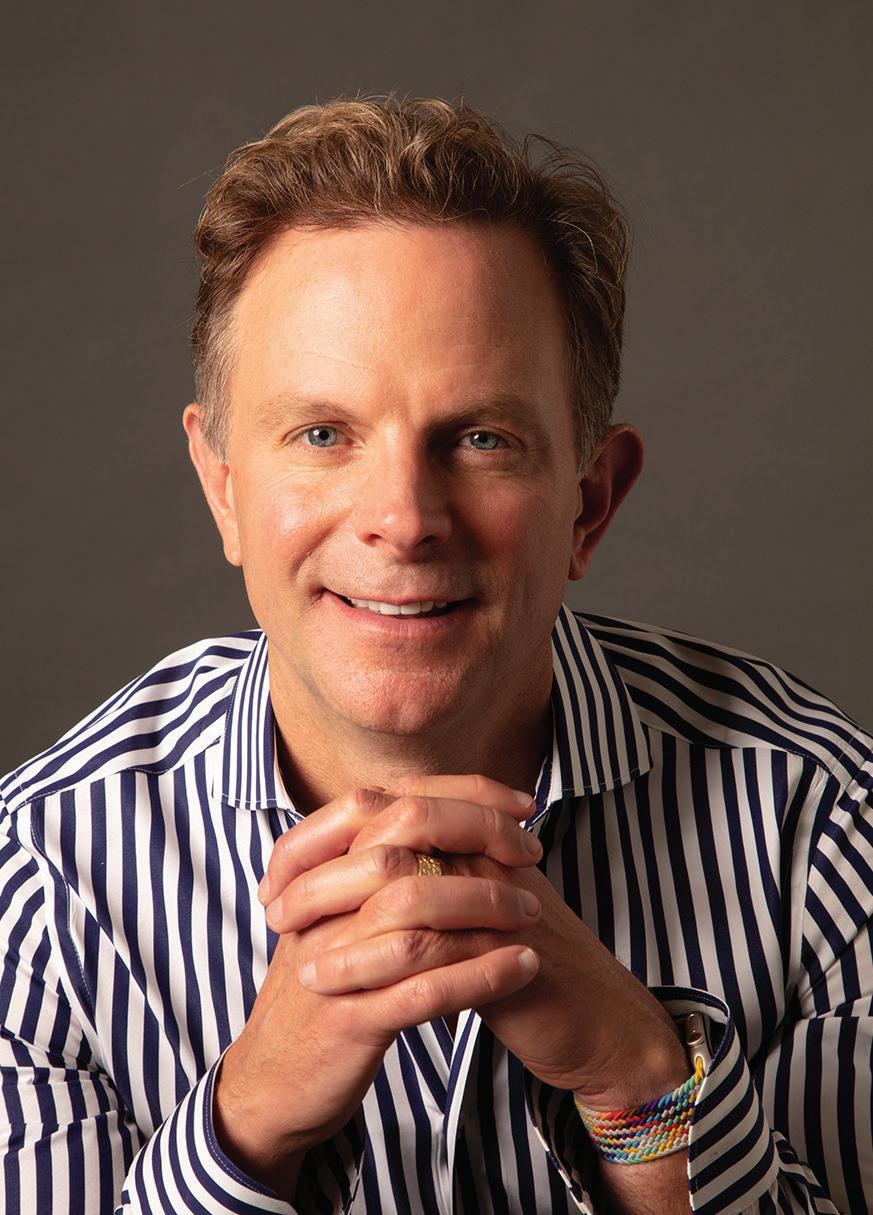
DAP HEALTH
1695 N. Sunrise Way
Palm Springs, CA 92262
8 a.m. – 5 p.m. | Monday – Friday 760.323.2118
PRESIDENT AND CEO
David Brinkman
DIRECTOR OF BRAND MARKETING
Steven Henke
SENIOR COMMUNICATIONS
MANAGER AND EDITOR
Daniel Vaillancourt
SENIOR MARKETING MANAGER
Dustin Gruber
MARKETING COMMUNICATIONS
SPECIALIST
Monica Calvillo
ART DIRECTOR
Tes Schaff
PHOTOGRAPHERS
Mark Davidson, Michael Davis, Donato Di Natale, Lani Garfield, Carlos Guillén Apezteguía, Austin Hargrave, Zach Ivey, David A. Lee, Steven Michael, Matthew Mitchell, Shawn O’Connor, John Paschal, Kelly Puleio, and Aaron Jay Young
WRITERS
Jacob Anderson-Minshall, Greg Archer, Staci Backauskas, Ron Blake, Ellen Bluestein, Trey Burnette, Alicia Green, Dr. Jill Gover, Daniel Hirsch, Barbara Kerr, Kay Kudukis, David A. Lee, Jim Macak, Victoria Pelletier, Charles Sanchez, Rory Taylor, and Daniel Vaillancourt
BOARD OF DIRECTORS
Patrick Jordan, Chair
Lauri Kibby, Vice Chair
Fred Drewette, Treasurer Mark Hamilton, Secretary
BOARD MEMBERS
Kevin Bass, Carolyn Caldwell, Ginny Ehrlich, Bruce W. Finch, Eve E. Fromberg-Edelstein, Karyl E. Ketchum, Athalie LaPamuk, Bertil Lindblad, Kyle Mudd, and Scott Nevins
Thanks to nearly 40 years of caring for people both directly and indirectly affected not only by the HIV/AIDS epidemic but by various other public health emergencies, DAP Health has the physical and intellectual resources, the desire, and — most importantly — the imagination to effect even greater positive change in the desert and beyond. The next epidemic hasn’t surfaced — yet. But just as DAP Health met earlier community health crises decisively and successfully, its experts stand at the ready.





STEP INSIDE DJ MODGIRL’S RETRO-FILLED MEGA-CLOSET, AN ONGOING COLLABORATION WITH THRIFT STORES THROUGHOUT THE VALLEY AND BEYOND
Words by Kay Kudukis • Photos by Matthew Mitchell
Kellee McQuinn’s closet has its own closet. The doors to the closet’s closet have been removed, and that’s where her shoes live in clear plastic boxes. I pick up a sparkly pair with what I’m guessing is a five-inch spiked heel and ask if she can actually walk in them. “They go with an outfit,” she says with a shrug and a laugh.
I turn to look at the racks and racks of clothing behind me and wonder if it’s the beaded and feathered Las Vegas-style gown she showed me just minutes ago. It looks like one of the Bob Mackie confections Cher might have worn on her 1970s TV shows. I flash back to my youth, with my mom getting ready for an event at the country club, doing her hair and makeup, then slipping into a cocktail dress or a gown and a tiara, transforming into a 1960s princess. It’s a nice memory. I feel happy.
Of course, that feeling has a great deal to do with McQuinn herself. Known throughout the valley as DJ Modgirl, she played my 65th birthday party. It was her first gig, and the first time we met. We became instant friends, although I imagine that’s what happens with everyone who meets her. She’s a natural performer with a cloud of charisma surrounding her like Pigpen has dirt. But, you know, in a good way.
For anyone who doesn’t attend or read about local events, DJ Modgirl has captured the valley’s fancy with her boundless energy and
for vintage and resale fashion, projecting a joyful persona wherever she goes. We are also proud to support her as an ally by sponsoring her new Sunday show on KGAY radio.”
That’s right, she has her own weekly radio show, too. But let’s get back to her closet.
It used to be a second bedroom, and not a small one either. One entire wall is racks of clothing, all retro and separated by categories: glam, sporty, disco, cocktail, tea party, art gallery, yacht rock — and going waaay retro is one lone squaredancing dress. “It was for a hoedown,” McQuinn tells me, and it is not a knockoff. “This is handmade from the Ozarks.”
All I want to do is to stay here and play dress-up forever. I snap out of it, reminding myself that not one item here would fit me. So, should I wish to create a closet like this for myself in my size, how
McQuinn enlightens me: “So thrifting — whether you’re in a store, at the vintage mart, or any kind of kiosk — can be a little overwhelming. I go for color. I’m attracted to color. Or anything shiny… I have a friend. His favorite color is clear. And he will argue that clear is a color.” She looks a little bewildered, then wryly intones, “I try not to wear clear clothes.”
retro style that echoes whatever groove she’s been asked to spin at one of the hundreds of events she’s DJ’d over the past year plus change. Metaphorically, this girl is on fire.
So, it isn’t surprising that she’s the face of the new “Re-Love the Pre-Loved campaign at DAP Health’s Revivals Thrift Stores, where profits from all four valley outposts — in Palm Springs, Cathedral City, Palm Desert, and Indio — benefit the nonprofit.
“Kellee is the perfect person to bring our campaign to life,” says DAP Health Director of Brand Marketing Steven Henke. “She possesses an authentic passion
She goes through her dresses as she talks, like she’s shopping, perusing the racks. She tells me her style icons are Audrey Hepburn and Jackie O, and that totally tracks. Put a pair of big sunnies on her with any outfit, and she could pass

“It’s better, in a way, to go when you don’t have an agenda,” she tells me, “and you’re just in the treasure hunt of it all and looking for color and texture. I just open my mind and I’m like, ‘All right, fashion gods, guide me’ and boom, boom, boom — I find some really great stuff.”
She continues down the rack. “I don’t want to sound like a New Age nut, but I really use the Force. If I’m looking for something — furniture, a knickknack, or something for an event — and I get an intuitive hit to go to Revivals, I beeline it there. And you have to sift because you might not notice… ‘Oh that’s just a pink dress,’” she says, as
she pulls a pink dress off the rack. “Or is it?” Suddenly, the dress comes alive with its gorgeous bodice and twirly skirt.
“Just like music,” she continues, “clothes make me feel alive. And one thing I love, love, love about Palm Springs is: people turn it out.”
We commiserate over peer pressure in Los Angeles, where we both lived for a while, and where people are judgy because you’re expressing yourself through your clothes — too many sequins, too much color… But here in Palm Springs, “There’s always someone who is going to be way more sparkly and way more rainbow bright than you,” McQuinn says.
She feels the same way about clothing labels as she does about people labels: she doesn’t care. A great dress is a great dress, whether it’s Chanel or an unrecognized designer. If she likes it and it fits, it’s hers.

Does she ever agonize about leaving an item behind for someone else to re-love? She laughs. “Forget about the man who got away. I have to forget about the dress that got away. But I also trust it.”
She gives me that 1,000watt smile of hers, and I know she really means it when she says, “Everything happens for a reason, you know?” And I smile back because I live here too, and I know exactly what she means.
She possesses an authentic passion for vintage and resale fashion, projecting a joyful persona wherever she goes.
Words by Ellen Bluestein
Vision Forward, DAP Health’s 10year strategic plan, continues to gain momentum in 2023. The initiative, which will expand the organization’s ability to serve clients — from 10,000 to 25,000 annually — is slated to be complete by 2025.
The impetus for DAP Health to grow is a result of the Affordable Care Act (ACA). “With [the ACA], lower-income Californians gained access to health insurance for the first time,” says DAP Health CEO David Brinkman. “All of a sudden, demand increased dramatically, and that’s when we knew we needed to be able to respond to this opportunity to increase the health and well-being of our community.”
The first phase of the campaign included purchasing the former Riverside County Health structure (renamed the Annette
more access points to people in our community,” says Director of Community Health and Sexual Wellness C.J. Tobe. “And opening these new clinics in this capital expansion — that’s exactly what it is. It’s going to serve more people, and people are going to be healthier and happier.
“Sexual wellness is really a gateway for people who don’t have access to community resources or to any primary care, behavioral health, or dental care,” continues Tobe. “They use sexual wellness as the first step to engage in some system to get support. And so, when you talk about opening a clinic … you’re opening a door to a community to say, ‘Hey, let’s have a conversation about your health and wellness.’”
few months behind, and its completion impacts the next phase of construction.”
Given the current cost and availability of construction materials and labor, delays will actually help the project. “It behooves the organization to take its time, hoping that material supply-chain issues will be resolved, and inflation, materials, and labor will normalize,” says Principal Architect Maria Song of International Design Corporation, the firm leading the project. “That’s important because I think people are going, ‘Why is it taking so long?’ But there’s a real benefit to waiting right now.”
Once Vista Sunrise II opens, the next phase — building the Desert Care Network Health Pavilion — will accelerate. The 19,000-square-foot structure will bridge the
Bloch CARE Building) adjacent to DAP Health’s Barbara Keller LOVE Building, and renovating it to accommodate three primary care clinics and a sexual wellness clinic. “To me, it’s all about creating
With the clinics complete, the focus is on working with the Coachella Valley Housing Authority to create a second permanent supportive housing structure, named Vista Sunrise II, that will offer 61 new affordablehousing units on DAP Health’s Palm Springs campus. “The construction is moving fast,” says Brinkman. “It’s just a


Barbara Keller LOVE Building and the Annette Bloch CARE Building, and will boast a central registration area for all clinical services, a diagnostic lab, a pharmacy, and a café with outdoor seating that will be open to the public and staffed and managed by clients of DAP Health’s Return-toWork program.

A driveway will route clients to this new main entrance, and pedestrian-friendly pathways will link it to the rest of the campus. The existing entrance on Sunrise Way will be repurposed into a service entrance for deliveries, and a new entrance will be created by Vista Sunrise II. The Vista Chino entrance will remain as is.
“These are really impressive plans, both literally and figuratively,’ says Song. “And it’s going to make such a huge difference to [DAP Health’s] programs and what’s offered.” According to Song, it will take a year and a half to complete the pavilion. Current estimates for its opening range from June 2024 to the end of that year.
The overall campus design, including the pavilion and the housing project, was approved last year by the city of Palm Springs during what is called the entitlement process. “This is when the campus developer submits to the city the entire design and legal information of what they propose to do based on a general plan,” explains Song. Next is the plan check, which “means that the plan examiner of the city’s Building Department will be reviewing the plan for construction to see that it meets the building code, the energy code, the plumbing code, and the structural code.”
subcontractors, making sure the project comes in within budget.
“The city of Palm Springs Building Department has been very collaborative,” Song reveals. “DAP Health is an established and important organization here in the valley. The city knows and supports that.”



Collaboration has been a key part of the entire Vision Forward planning process, and it will continue as DAP Health’s leadership works with Song to finalize the interior design. From the beginning, the goal was to create the look and feel of bringing the outside indoors, which will be achieved by using organic materials throughout the pavilion. With that, “those qualitative words now become quantitative in specification material selection,” says Song.
Design of the east space will begin as construction is underway on the west area. That way, by the time construction is finished on the latter, plans will be approved for work to begin on the former.
As plans continue to evolve, input from staff becomes a vital part of the process. It also speaks to DAP Health’s mission of inclusion and collaboration. “There’s a saying that goes, ‘If it involves me, involve me,’ and so that’s what we do,” says Chief of Clinical Operations Carol Wood. “We really do get right down to the root of it, even to the extent of asking nurses and medical assistants, ‘What’s going to make your job more efficient, and how are you going to be able to do a better job for your patients in your role?’”
With the expansion of the campus comes the expansion of the definition of health care itself. No longer does it just include traditional physical well-being. “We have a very unique campus model,” says Brinkman. “It’s one that acknowledges that health care is access to housing, health care is access to acupuncture
While working with the Building Department during this process — which can take up to six weeks and involves correcting and reworking any code issues that are found — Song and her team will develop a tenantimprovement plan which fleshes out the plans for the interior of the buildings. Once permitting is approved, Song will select the general contractor and all the
Song identifies the expansion as two separate projects: the west space (which includes the pavilion) and the east space (which is mostly facade improvements, exterior building upgrades, and smaller additions). The east space “is more of a site design,” says Song. But because the buildings are exposed and visually integrated with the image of the city, “any design that we do would have to go as a major architectural application so that [when] we get the concept approved … we can start developing the plans for construction,” she continues.
and chiropractic and meditation. Our model understands that health care is proper nutrition combined with good mental health care and substance use counseling and, last but not least, that it should be accessible to all, regardless of one’s ability to pay. To be able to go from offering all this to 10,000 folks today to 25,000 people at the completion of this campaign is extremely exciting.”
DAP Health is an established and important organization here in the valley. The city knows and supports that.
Why one couple has used their philanthropy to support

Walter Annenberg, a businessman turned ambassador, made millions in his life, and in his later years, he and his wife, Leonore, became two of the most prominent philanthropists in the United States. Their family name is emblazoned on literally dozens of buildings all over Southern California, and it can open doors to scientists and artists alike.
Scot and Lance Karp aren’t trying to compete with the Annenbergs, but their philanthropy is making a big impact in the desert all the same.
“We’re not the biggest givers in the valley,” Scot acknowledges. “We’re not competing with the Annenbergs; we never will, that’s not our goal. But [using] what we have, we feel that we’re duty-bound to contribute to making our community and other people’s lives better.”
That resonates with the mission of DAP Health, says Director of Development James Lindquist. “Philanthropists are the backbone of our organization. They are the ones who helped us first get started.”
After the Karps first attended the annual Steve Chase Humanitarian Awards (dubbed The Chase), they ended up buying a home designed by him. A trained architect, Scot says he and his husband were just drawn to the home. “So that was another connection as we learned about Steve Chase’s depth of involvement with starting Desert AIDS Project back in the ’80s when there was no health care.”
Of course, Scot adds, the organization is no longer “just an AIDS organization anymore — it’s a community-based health organization that serves everyone.”
Scot and Lance built their own wealth in the highly competitive Southern Florida real estate world before buying a home in Rancho Mirage five years ago.
The two came from middle-class families, and Scot says, “created our own destiny. We’re not inherited wealth; we’re not trust-fund guys. We created it and we wanted to use those resources for bettering other people’s lives. Lance and I feel very privileged to live the life we live; we don’t take it for granted. We both believe in our hearts that there’s an obligation. One of the basic tenets of philanthropy is ‘to those much is given, much is required.’ We don’t say that as a platitude; we live our lives that way.”
Drawn to DAP Health because of its involvement with the local LGBTQ+ community, Scot and Lance researched the organization, toured the campus, and met with CEO David Brinkman before deciding to throw their financial support behind it.
Now in their 60s, the couple says their philanthropic philosophy is “to choose causes that are important to us and that benefit others, and to be examples to inspire others to join. We’ve always been connectors, and we’ve always been influencers within our circle because we’re quite careful with what we get involved in. When we choose a cause, it’s after doing a lot of research and study. And then we want to get other people involved. So it’s like leading by example. People know that we’re judicious and careful with our vetting of the causes we get behind.”
Although the men make numerous smaller contributions to other organizations, they have chosen to focus on LGBTQ+ health care when making their more significant donations. To facilitate that giving, the couple established a foundation in 2018.
Today, the nonprofit founded in 1984 to respond to the AIDS crisis serves more than 10,000 people annually and hopes to reach 25,000 a year by 2025. It has been donors, Lindquist says, that “helped us to expand our services, to buy the Annette Bloch CARE Building, to make the Barbara Keller LOVE Building expansion, to build the Marc Byrd Behavioral Health Clinic, the Karla Kjellin-Elder and Jeff Elder Social Services Wing, and so much more.”
The Karps’ own philanthropy underwrote the behavioral health reception area within the Barbara Keller LOVE Building expansion. The couple says they were originally drawn to DAP Health via its association with Steve Chase, the world-renowned interior designer who was an early donor, volunteer, and board member of Desert AIDS Project (as DAP Health was originally known).
“The naming of our foundation was quite purposeful,” Scot explains. “It’s the Scot and Lance Karp Family Foundation, and we wanted ‘family’ in the name because there’s two men and we’re a family.”
Choosing to underwrite the behavioral health reception area was equally considered. “We feel that there’s a huge need for behavioral health and mental health care,” Scot says. “DAP Health is dear to our hearts because it’s our community and we feel that we have to support our community … That’s why we feel passionate about it; because it serves the LGBTQ+ community.”
The Karps’ donation will both serve generations to come and continue to inspire others to give.
“We’re not inherited wealth; we’re not trustfund guys. We created it and we wanted to use those resources for bettering other people’s lives. Lance and I feel very privileged to live the life we live; we don’t take it for granted.”
 Words by Greg Archer
Words by Greg Archer
The late, great civil rights icon Harvey Milk once said, “The only thing they have to look forward to is hope. And you have to give them hope. Hope for a better world, hope for a better tomorrow…”
Milk may have been referring to generating equality and fueling civil rights, but his words ring true today when it comes to planned legacy giving and the bequests individuals intentionally make to better their local community after they’re gone. In that respect, planned legacy giving is all about keeping hope afloat.
Including DAP Health in one’s estate plan allows the organization to continue ensuring the health and well-being of the community. As desert residents, and the LGBTQ+ community in particular, quickly head into the middle of the decade amidst social and political uncertainty, planning for the future has never been more vital.
“We all know that if you don’t plan your estate, the government will tell you where it’s going to go. I don’t think any of us want that to happen,” says Palm Springs realtor and philanthropist Andy Linsky, who served on DAP Health’s

board of directors from 1990 to 2014, and who was its chair from 1998 to 2002. Linsky also founded Partners for Life (PFL), a prominent DAP Health donor group that offers significant financial support to assist the nonprofit with ongoing local health matters, social services, outreach, and much more.
“Planned giving is a great way to control your legacy,” Linsky continues, “and it doesn’t have to be huge dollar amounts. Whatever you have in your estate, it’s really comforting to know you have addressed it, and that your instructions will be followed. We had a presentation about planned giving a while back, and a gentleman made a statement that sums up why everybody should have an estate plan. He said, ‘Because everybody’s got stuff. And everybody’s going to die.’ It’s very basic, but it has humor in it, and it makes sense.”
Through the years, Linsky has been instrumental in stoking several creative fires at DAP Health — from creating the PFL program of sustaining donors to advocating for planned legacy giving. He’s quick to point out that the organization has been strategic in keeping up with all the changes throughout the decades, where some other organizations and communities may have “imploded because they failed to plan for the changing landscape. The
important thing is that the need is there, and always will be, for Partners for Life and planned legacy giving.”
H. Christopher Heritage — founder of Heritage Legal, PC, which offers legal services for estate planning — specifically hones in on the unique estate and relationship planning needs of the LGBTQ+ community and other nontraditional families.
“Within the gay and lesbian community, for instance, most of us don’t have children. So, one way of ensuring a legacy is leaving a portion, or all of your estate, to charities,” Heritage says. “People leave to charities to try to reduce their taxable estate. One of the best tools for making charitable gifts is through retirement assets, such as IRAs and 401(k)s, because the charity receives 100% of those assets. Whereas, when you leave retirement assets to a person, they usually have to take a full distribution of it within 10 years and pay their personal income tax rate — federal and state — so you might lose 30-40% of the retirement assets’ value.”
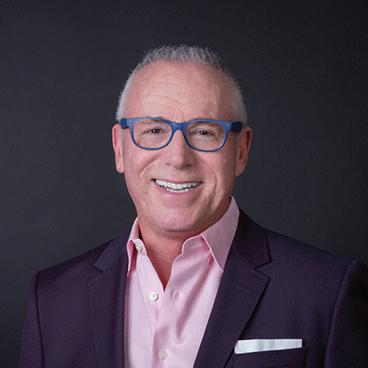
Heritage goes on to say that currently, “an estate is federally taxed only if its value exceeds $12.92 million per individual, and double that for married couples (estate and lifetime gift tax exemption), and the state of California has no estate tax at all since it was repealed by voters in 1982. However, even if an estate doesn’t reach the $12.92 million taxable threshold, there may be capital gains taxes that would need to be paid if an asset, such as a highly appreciated stock, or real estate, is left to an individual. Whereas, if you leave that asset to a charity, you can avoid any capital gains taxes.”
Another thing people should keep an eye on is that the current estate and lifetime gift tax exemption sunsets on December 31, 2025 — if Congress doesn’t do anything to change or extend it — and returns to $5 million per individual. This will make many more estates potentially taxable.
Other things to know: Secure Act 2.0 was introduced in 2023, making modifications to the original Secure Act affecting retirement. The change increases the required minimum distribution (RMD) age, meaning retirees must now begin taking taxable withdrawals at 73, and at 75 by 2033. The new law does not increase the age an IRA owner can make a qualified charitable distribution, which remains at 70 and a half years. This extension allows individuals more time to save. One thing to consider is to donate your RMDs to your charities.
Al Jones, DAP Health was the clear choice.
Jones was married to his husband
Marc Byrd for 26 years before Byrd passed away in 2018. Jones donated significant funds to the organization, which were specifically earmarked for the establishment of the Marc Byrd Behavioral Health Clinic, unveiled in spring 2022.


“I think it’s important to consider thoroughly supporting an institution that reflects one’s philosophy and values,” Jones shares. “There is no better time to think of organizations to support via a planned legacy gift than the present. An organization like DAP Health needs to raise money to provide services to both those with and without insurance, both now and in the future. But it’s nice to know that the organization will receive funds in the future that will significantly help those budgets as well. So, legacy planned giving is really a way to provide a significant gift from your estate, deferring to give to a time in the future — literally, after you have passed away. And these legacy gifts give the organization an opportunity to plan for the future.
“I wanted to do something memorable for Marc,” Jones continues. “I gave a legacy gift of $250,000, but also used that as a challenge grant to raise money for DAP Health’s general fund.”
Heslin continues. “But also, you can assign contingent beneficiaries and state, for example, that 50% is assigned to DAP Health and 50% is assigned to the LGBT Community Center of the Desert, or whichever charity you prefer.
“That’s really important to do one way or the other — either having a beneficiary designation established, or title your accounts in the name of a living trust, when possible. Then the trust can have all the beneficiary designations you want to have. If you don’t have accounts titled in the name of a trust, or at least have assigned beneficiaries, when you pass away, your assets will most likely never make it to a charity. Funds and assets without beneficiary designations will most likely go through probate and eventually will either be paid out to a relative, a ‘next of kin’ you may not want to leave money to, or worse, funds will just be taken over by the state.”
Linsky sums up the importance of looking toward a future beyond your own in a graceful way: “Legacy planned giving is a very fulfilling act, emotionally and spiritually.”
Learn more about planned legacy giving by visiting PlannedGiving.DAPHealth.org.

a certain percentage of resources go to a charitable organization. “I educate my clients that it is just as simple as making sure you properly establish your beneficiaries,” he says. That’s typically where Heslin or other financial advisors will come in and make sure that an account is set up with a beneficiary designation. Other things come into play, too.
“When you have an IRA or brokerage account, an annuity, or even a bank account —whatever it is — normally your spouse or partner is set up as the primary beneficiary,”
I think it’s important to consider thoroughly supporting an institution that reflects one’s philosophy and values.

A deadly virus is sweeping the world. The LGBTQ+ community is being targeted.
It’s 1984.
It is also 2023.
Nearly 40 years ago, HIV was considered a mystery illness targeting gay men. With public agencies and the health care system slow to respond to the growing epidemic in the Coachella Valley, a community of grassroots volunteers established Desert AIDS Project (DAP), now known as DAP Health.
Today, a deadly virus is again sweeping the world and the rights of the LGBTQ+ community are under renewed attack, with more than 300 anti-LGBTQ+ bills introduced in state legislatures across the United States.

To address the challenges of AIDS, COVID-19, mpox, and other diseases — especially among those who are disenfranchised — DAP Health has created a legacy of leadership, providing comprehensive health care for all across Southern California.
Because now as then, DAP Health’s mission remains unchanged. The organization marches on with an unwavering belief that health care is a human right.
That belief and passion were at the heart of DAP Health’s 29th annual Steve Chase Humanitarian Awards (AKA The Chase), presented by Eisenhower Health and held at the Palm Springs Convention Center on March 25, 2023. The fundraising gala has raised millions of dollars to support DAP Health and the people it serves.
“There are so many factors that affect a person’s health — starting with housing, mental health, food insecurity,” said Executive Vice President and Chief Operating Officer of Eisenhower Health Ken Wheat. “DAP Health has been and continues to be critical to our community in addressing health care on all of these levels.”
DAP Health CEO David Brinkman has noted that there are tens of thousands of people in the Coachella Valley who do not have access to health care because “the barriers of poverty are so great.” In recent years, he added, “From a perspective of health care, we saw how COVID-19 — and then mpox — impacted people who live on the margins of our society.”
But Brinkman also expressed hope.
“When we combine the Affordable Care Act with the generous donations from our supporters in the community — and then our mighty staff and volunteers — we’ll be able to care for more than
100,000 people next year, regardless of our patients’ ability to pay. That’s what creating health equity is all about.”
In 2022, Borrego Health filed for bankruptcy, putting 120,000 patients in San Diego and Riverside Counties at risk of losing their access to health care. DAP Health, Innercare, and Neighborhood Healthcare formed a lifesaving alliance to provide care for Borrego Health patients.
As a result, DAP Health’s services are expanding into 11 new cities with 26 new clinical sites. From the Salton Sea to San Diego, 600 additional physicians and medical staff will provide services from obstetrics and gerontology to HIV prevention and treatment, all under the DAP Health umbrella.
“We are honoring our founders’ vision of creating health equity for people who do not have that basic human right today,” Brinkman told the audience at The Chase. “When we see lack, we act. It’s in our DNA.”

In presenting the 2023 DAP Health Equity Award to fashion icon and philanthropist Donna Karan, DAP Health Board of Directors Vice Chair Lauri Kibby called Karan “my friend and sister-in-arms.”
AT DAP HEALTH’S BIGGEST EVENT OF THE YEAR, THE MESSAGE WAS CLEAR: COMPASSION CHANGES LIVESA leader in the fashion industry’s fight against HIV/AIDS, Karan is the founder of Urban Zen, a lifestyle brand and philanthropic foundation that collaborates with existing organizations to enhance spiritual, emotional, and physical growth.



“Nobody gets away without being sick,” Karan said, accepting the award. “Each and every one of us will be that person one day. The question is: Who’s going to take care of us?” She added: “Those people who care for us are the most important people in the world. We need the ‘care’ in health care. And this organization understands that.”
Dr. Raul Ruiz, the U.S. Representative for California’s 25th District, presented the 2023 DAP Health Humanitarian Award to Desert Healthcare District & Foundation CEO Dr. Conrado E. Bárzaga and the organization’s board of directors.

As Dr. Ruiz reminded The Chase audience, “Time and time again, the District has stepped up to the plate even in the most difficult of times to protect our communities’ health.”
Accepting the award, Dr. Bárzaga reminded the audience about the challenges of DAP’s earliest years. “DAP did not wait,” he said. “DAP didn’t ask for permission. DAP organized an unprecedented response with very few or no tools at all. DAP Health armed itself with compassion, with care, with love for those who were suffering.”
Dr. Bárzaga then challenged The Chase audience. “As we work together toward building a health care model based on equity, let’s not forget that ignorance, hatred, and homophobia are still here,” he said. “That they walk together with racism, transphobia, and other forms of discrimination… We must stand against that.”
Damian Calmett has been living with HIV for almost 40 years.
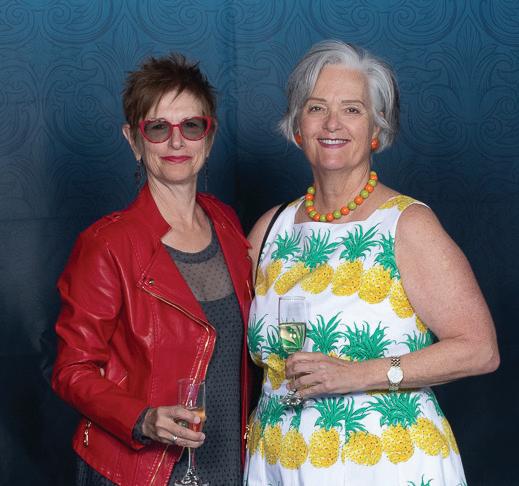
A former entertainer — “a gorgeous girl with wigs and lashes, singing in clubs” — he once upon a time helped raise money for Desert AIDS Project, where he was also a patient. “I had hidden the fact that I was HIV-positive for almost three decades,” he told guests at The Chase. “I kept that a secret because of the shame, the stigma. When I came to DAP Health, I had spiraled out of control. I was homeless. I had lost everything. But because of the compassionate care, I was able to take a mess and turn it into a message of hope, a message of strength.”
Today, he is Rev. Dr. Damian Calmett, senior minister of Innerfaith Ministries Worldwide, located in Palm Springs. He is also the front desk coordinator at DAP Health. “I want people to know they’re valuable,” he said. “That when you walk in the doors, you are important.” He added: “When I touch somebody and their life has changed — and they’re able to turn their life around — you’re the ones that have been able to do that because you invested in me.”







Every time David Brinkman has walked onto the stage at The Chase — and looked out at all of the faces of those who are there to support DAP Health and the people it serves — it has been a profound moment for him.


“It’s very humbling and very emotional,” he said. “After being in my role for 15 years, I know so many in our community so well. And I love them because I see the side of them that is so deeply committed to our mission and to our vision. So to be standing in front of them makes my heart pound because I love them so much.”
He added, “I work with so many people who were not born and raised in this community, who came here from larger towns. And one of the things they really cherish is the small size of this community and how, when we all work together, we can solve social issues.”
In his closing remarks at The Chase, Brinkman noted the presence of DAP Health co-founder George Sonsel, who “heard the desperate cries of others who’d been ostracized — fired from their jobs, kicked out of their homes, and denied care — for being sick with a mysterious virus and were considered disposable because they were gay.”

Brinkman added, “George and his co-founders — and all of you who rallied behind them — knew better. You rejected fear and ignorance, and chose love.”
And Brinkman challenged The Chase audience: “When you give to DAP Health, you give not only to this community, but to yourself. Because you are this community. And as a thriving member of it, taking care of your neighbor is in your DNA, as well. You’ve always understood that it will be your legacy too.”


The burgeoning collaboration between DAP Health and e-commerce, cloud computing, streaming, and AI behemoth Amazon was sparked just over a year ago when two influential leaders engaged in some meaningful conversation.
At the behest of a good pal, Amazon Head of Community Engagement for Southern California David Ambroz agreed to take a tour of DAP Health’s Palm Springs campus led by the nonprofit’s longtime CEO, David Brinkman. While Ambroz was no newcomer to the desert — he once upon a time owned a vacation home here, and has returned frequently to visit friends, showing a particular affinity for hot spots like Joshua Tree and the Salton Sea — his knowledge of the organization founded in 1984 as Desert AIDS Project was peripheral at best. Now he would get an intimate backstage look at all that makes the agency so universally admired.
“I walked onto campus, walked into the clinics, and was just blown away,” says Ambroz, who shares his story of spending his youth first in homelessness, then in foster care, in his recently published memoir, “A Placed Called Home.” “I was a kid who went to free clinics, and they did not look like this. As I walked around, I saw the dignity with which people were treated, which was akin to what you’d expect at the best hospitals. The other thing that struck me was that the whole person was treated. I just thought that was so beautiful. I remember so well, in my own life, having

Words by Daniel Vaillancourt
to struggle to find dental care, vision care, just basic primary care. The tour kept unfolding, each new wing unfolding. But the pièce de résistance was when we walked outside, and I casually noted that DAP Health interestingly has an apartment complex abutting its property. And Brinkman said, ‘No. That’s ours.’ I couldn’t believe it.”
At the time of his site visit, Ambroz was very new to Amazon, having spent more than a decade in a similar role at The Walt Disney Company. “I had an incredible run at Disney,” he says. “But when I looked out at the horizon and thought about what is that next step — where can I stretch and learn and grow, and what company is doing the kind of scripting that makes me passionate — there were very few places you could compare to Amazon. I was very excited when the opportunity arose, and I went after it.”
Immediately after meeting Brinkman, Ambroz knew that it was in all parties’ interests for Amazon to support DAP Health. And thus, the company signed on as the presenting sponsor of the 2022 Steve Chase Humanitarian Awards. Amazon was back at The Chase this year, at the same level of support, albeit as platinum sponsor (with Eisenhower Health serving as presenting sponsor).
“One of the best methods to support communities is not to come in and dictate solutions, but to find the folks who are doing the great work, or have great
ideas, or have achieved great results, and listen and learn, then support,” says Ambroz of the community engagement philosophy he and his employer share. “That’s how I’ve approached my role in the region. Identify organizations and individuals, then see how we fit into that puzzle. Sometimes it’s philanthropy of product. Sometimes it’s volunteerism. Sometimes it’s monetary. Sometimes it’s partnership in hiring.”
Ambroz is supremely thankful that, in Amazon, he has found a safe space to effect change in areas that most matter to him on a personal level. “I was homeless for 12 years, and then I went into foster care,” he says. “Both of those periods in my life were really brutal. And when I think back on the needs my family and I had, one of the things that most haunted me was the constant insecurity surrounding access to food. Every day, food — and shelter — but really food.”
Just some of the other local charitable organizations Ambroz encouraged Amazon to support include Palm Springs Unified School District, College of the Desert, the Cathedral City Boys and Girls Club, FIND Food Bank, and Feeding America Riverside | San Bernardino. “We were so proud of our partnership with ‘Feed SoCal,’ which was an employeedriven food drive inside all our facilities in partnership with FIND Food Bank and Feeding America,” he says. “More than 40 of our facilities and retail locations participated. This work struck a chord with our employees who wanted to give back to their communities. That’s one community engagement effort of which I’m particularly proud.”
In Brinkman and DAP Health, Ambroz feels he’s found a someone and a somewhere that share many of his and Amazon’s leadership principles. “This idea of customer obsession and working backward from the needs of your customers into what you must do to deliver those needs,” he stresses. “I was listening to David and thinking, ‘You could be an Amazon executive.’ I was so
struck by his insight, ‘How can a person be medically compliant when they’re homeless?’ Boy did that reach into my heart and give it a squeeze.”
Ambroz further describes how he sees DAP Health not just looking around the corner, but around corners, plural, each of which have corners of their own. “I was so struck by that future-thinking mindset,” he continues. “I don’t think it’s usual for a nonprofit to flex that muscle so substantially as they face the immediate needs of the day. And then, for DAP Health to have the full buyin at all levels of government and the community speaks not just to success, but to diplomacy and engagement, which are other aspects we value tremendously at Amazon.”
As for last year’s The Chase itself, Ambroz remembers having a fantastic time. “We had three gorgeous tables, and volunteers from the Glamazons,
our LGBTQ employee affinity group, as ambassadors and escorts. Oh, and I spent way too much at the silent auction!”
Ambroz says that over the last year, as he’s attended other health centers around the country, he’s mentioned DAP Health as a shining example of how to do things right. “The organization has become my north star in terms of doing the good work we hope to do with community engagement,” he says. “So, when David came back and was talking about The Chase for 2023, it was really a no-brainer to get behind this event and this organization. And what I would say is that this platinum sponsorship is one of our biggest investments in the region philanthropically, reflecting commensurately the impact DAP Health makes.”
And so, Ambroz and Amazon hope to continue their support of DAP Health, especially now that the organization’s acquisition of Borrego Health will see its number of patients served annually swell to more than 120,000, including women and children.
“The hell I went through is nothing we should duplicate in any child in this country or anywhere,” concludes Ambroz. “The fire that forged me should never have been lit, both in the brutality of the homelessness, with a near complete lack of access to health care, and the systemic problems I experienced in the child welfare system. I would say the innate thing we all need to do is close our eyes and imagine a system we’d want to put our own children through, and that’s really what we should work to develop. Together.”


We were building and investing in the health and wellness of our community.
The Coachella Valley likes to pride itself on diversity. However, attending community functions, programs, or gatherings could lead one to believe the desert community is less diverse than it considers itself to be.
At a 2017 New Year’s Eve gathering, a group of friends — all of whom were gay Black men — realized they all shared similar feelings of isolation and disconnection from much of the greater Palm Springs community. They knew men like them were out there, living productive lives, but they didn’t always see one another partaking in the many activities the valley had to offer. They felt isolated not only as individuals but also as a smaller community within the larger desert family.
Tim Vincent was one of those men at the party. To meet him, it’s hard to imagine he would feel isolated and disconnected from any community, but he says after moving to Palm Springs with his partner about six years ago, they had “the only people in the room” moments. At first, he didn’t notice it; he was used to being different. “But it can be hard being the only Black person in the room,” he says. Then he discovered others were experiencing the same feeling he and his partner were, and suspected there had to be more men he didn’t know out there facing the same feelings.
The men were having a James Baldwin flash — the challenge was in the moment and the time was right. So, they acted by reaching out to the other gay African American men who felt isolated and disconnected, and formed Brothers of the Desert (BOD). Their mission was “to nurture and support gay Black men and allies through education, advocacy, social networking, volunteerism, and mentorship.”
Today, Vincent serves as the president of the nonprofit, which was formalized as such in 2020. He has more than 30 years of experience working in the HIV and health care fields, including work with the CDC and the University of California San Francisco. His understanding of health care and patient engagement was beneficial as BOD grew and formed partnerships with DAP Health.
Vincent explains that BOD started with monthly meetings where members could discuss concerns affecting them and the community. The leading members realized the community needed more than meetings, so they formed their first outfacing event, their Wellness Summit, in November of 2019, originally held at the LGBTQ
Community Center of the Desert. DAP Health became a sponsor in their third year.
“We were building and investing in the health and wellness of our community,” Vincent says. “We wanted to take a holistic and comprehensive approach, addressing community members’ physical, mental, spiritual, financial, and social health.” And they did. What the Wellness Summit offered was tailored to the needs of the Black community. They incorporated the intersection of being Black and gay and how the stressful effects of racism and homophobia affect the individual’s and community’s health.
Four years later, the annual Wellness Summit has grown and is now held at Margaritaville Resort Palm Springs. DAP Health is still a sponsor, and the November 2022 summit had about 200 guests — twice the size of the first event. The Wellness Summit hosts speakers who are medical doctors, spiritual practitioners, business leaders, yoga instructors, and other experts offering education in their specialized fields. It creates a space where people feel comfortable asking wellness questions. Workshops are also available for guests to get hands-on experiences with wellness practices. Vincent has received positive feedback from attendees, and hopes the event will grow into a multi-day affair.
BOD also provides a quarterly speaker series throughout the year. Guest lecturers are thought leaders and experts who give educational talks that support and maintain what is learned at the Wellness Summit. Participants can engage and discuss topics like mindfulness, systemic racism, microaggressions, and mental health for Black queer people. Furthermore, those chats also act as a gateway for BOD to steer members to DAP Health, where they can find similar wellness opportunities to the ones they learned about at the Wellness Summit. Acupuncture, yoga, massage, sex and intimacy groups, stressmanagement groups, and building-positive-life groups are just some of the opportunities attendees can take advantage of to maintain a holistic approach to wellness.
As the partnerships between BOD and DAP Health grow, Vincent hopes Black community members will deepen their knowledge that both organizations can help them find health resources and solutions.
For more information, please visit brothersofthedesert.org and follow the group on Insta @brothersofthedesert.

There was a growing consciousness that gay Black men in the Coachella Valley felt isolated and disconnected from the community. The issue became the topic of conversation at a 2017 New Year’s Eve dinner party. “No one in the valley was doing anything to address the problem,” says Eric Davis. “So instead of complaining about it, why not create a solution?” The men did do something. They formed Brothers of the Desert (BOD), a nonprofit organization that provides a growing, local support network for gay Black men and their allies living here.
Davis is BOD’s vice president. The group started with meetings on the second Saturday of every month at the LGBTQ Community Center of the Desert in Palm Springs, where the men had a forum to discuss their lives and challenges. The African American population in the valley is less than 5%; gay Black men are only a fraction of that. Those gatherings continue today.
In 2019, BOD held its first Wellness Summit. “It was a vision of President Tim Vincent,” says Davis, “and we have been able to implement that vision into reality for the last four years.”
DAP Health became a sponsor the third year, and its partnership and sponsorship continued to grow. Another partnership the two organizations started three years ago involved DAP Health’s Desert AIDS Walk. BOD was able to walk as a group and raise money for the event. The organization also gained visibility with a speaking engagement and an event booth where they spoke with community members and provided educational and outreach information.
Davis also happens to be the sales director and event planner for the local magazine GED (Gay Entertainment Directory.) His experience gives him wisdom and knowhow when he asks himself, “How do we engage with the community to facilitate our ideas?” And they do engage. Besides the annual Wellness Summit held in November and participation in the AIDS Walk, BOD hosts the annual New Year’s Eve Legacy Gala, which serves as its largest annual fundraiser, celebrates Legacy honorees, and brings the community together to ring in the new year.
That is the mission of BOD — to connect and engage gay Black men to the community. “If we don’t feel isolated and
we feel like we can grow and strengthen,” says Davis, “we can move forward.”
DAP Health, invested in BOD’s growth, has been an active partner from a financial, physical, and encouragement standpoint, and has had opportunities to partner in BOD’s speaker series. When DAP Health needed messaging help with the LBGTQ+ community of color during the mpox outbreak in 2022, its leaders called on BOD. An mpox vaccine clinic was set up at the Wellness Summit in November 2022 at Margaritaville in Palm Springs.
BOD’s primary concern is its community members’ mental health, which was most severely impacted by the isolation the men were experiencing. Beyond engagement in the Wellness Summit, the Legacy Gala, the speaker series, and monthly meetings, a partnership with DAP Health was formed at Greater Palm Springs Pride to create content that did not center around alcohol, was Black-centric, and appealed to allies.
In the spirit of holistic wellness and philanthropy (part of its mission statement), BOD has been able to support the education of LGBTQ+ and Black students in the Coachella Valley with more than $10,000 in scholarships. Donations have also allowed the organization to establish an emergency fund for members needing critical financial help with rent, food, or even new tires for a vehicle. Underneath each act of giving, recipients understand, whatever the situation, that they are not alone — that there is a community available to them. Some recipients have been able to repay the fund once they’re back on their feet.
As BOD continues to grow and act on its purpose — to change the dynamics that produce isolation, disconnection, and inequities among gay Black men — the organization hopes to strengthen its partnerships with DAP Health and have a more significant presence in the Coachella Valley. It currently has approximately 125 members in the Palm Springs area, across the country, and in Canada, but it continues to do membership drives. A monthly newsletter, “Brother’s Drumbeat,” keeps the community abreast of current events and engages community leaders in conversation.
For more information, please visit brothersofthedesert.org and follow the group on Insta @brothersofthedesert.
 • Photo by Aaron Jay Young
• Photo by Aaron Jay Young
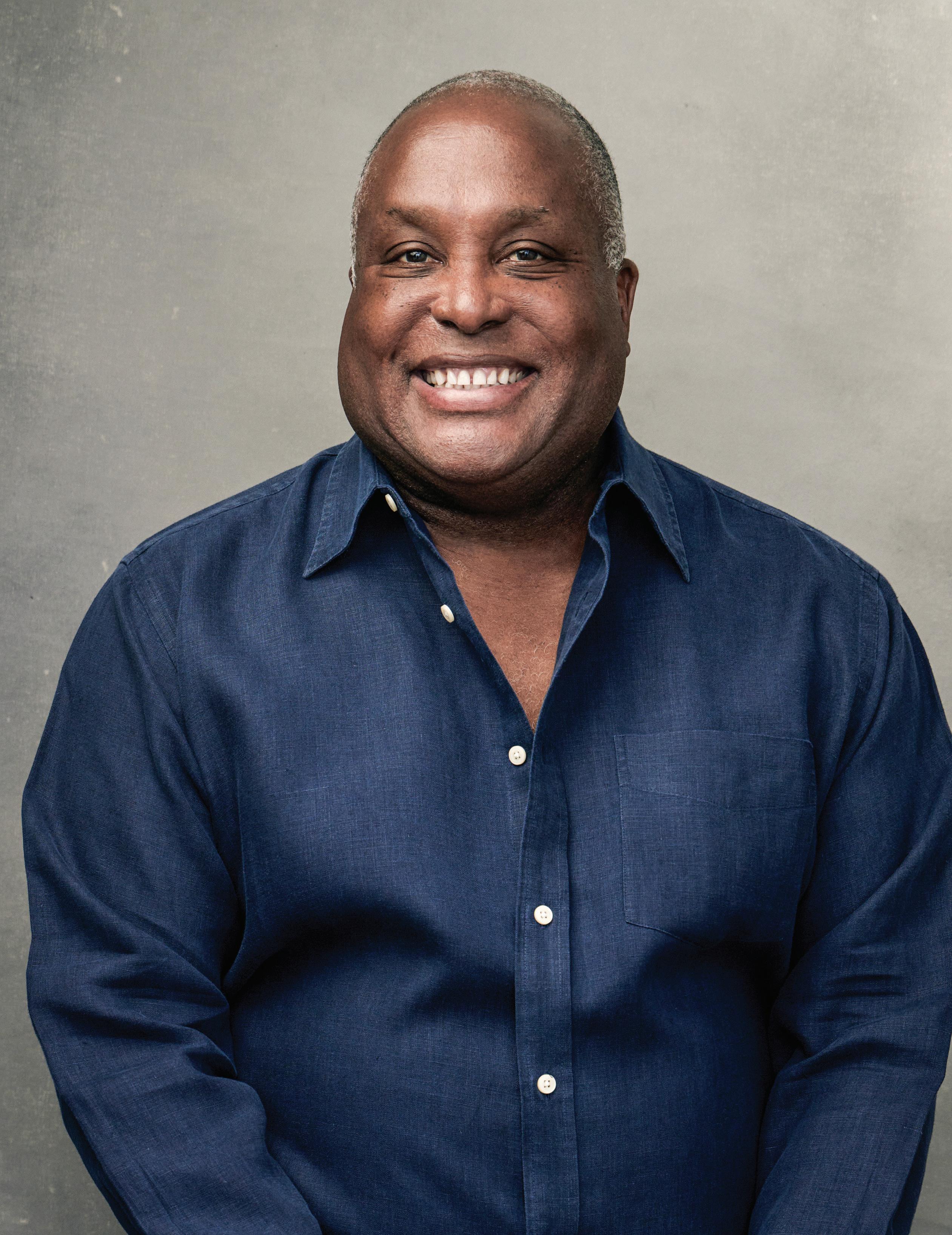
If we don’t feel isolated and we feel like we can grow and strengthen, we can move forward.

WITH A NOVEL APPROACH TO WELLNESS BENEFITS, DAP HEALTH ENSURES EMPLOYEES REMAIN IN THEIR HAPPY PLACE
Words by Victoria Pelletier

DAP Health understands that the key to helping individuals navigate through times of crisis is to meet the hurting ones where they are in their personal journeys. This deeply empathetic approach to healing — especially healing rooted among those in the LGBTQ+ community — requires listening, compassion, and a commitment to connecting those seeking healing with a variety of tools that support it. To make all this possible, DAP Health leans on the passion of its employees, individuals who innately understand what it’s like to experience exclusion, as well as emotional and physical pain.
DAP Health’s leadership cadre, led by CEO David Brinkman, recognizes that health care providers and other related professionals need vigorous health and wellness benefits themselves due to the tremendous stress associated with providing care to others. “Our wellness specialist and all the healers take health and wellness very seriously,” Brinkman notes, a sentiment that underscores the organization’s intent to combat the burnout pervasive in most work settings in the post-pandemic environment. “DAP Health honors all people,” Brinkman maintains, as the organization is “built around respect, admiration, and listening — values that create not only relationships but a community we all want to be a part of.”
While burnout is on the rise across demographics, young workers seem especially vulnerable to a trend we might expect to see among those who have been in the workplace for a while. A recent study of 1,000 Gen Z workers conducted by the Mary Christie Institute found that half of respondents had “experienced mental and emotional hardships in the past year.” A closer look at the data showed that 43% of respondents reported anxiety symptoms, while 31% described symptoms consistent with depression. Worst of all? A whopping 53% of the Mary Christie survey respondents reported experiencing significant burnout in the previous year. Without targeted interventions and long-term supports in place, many of those experiencing burnout will join the ranks of the Great Resignation within the next 12 months.
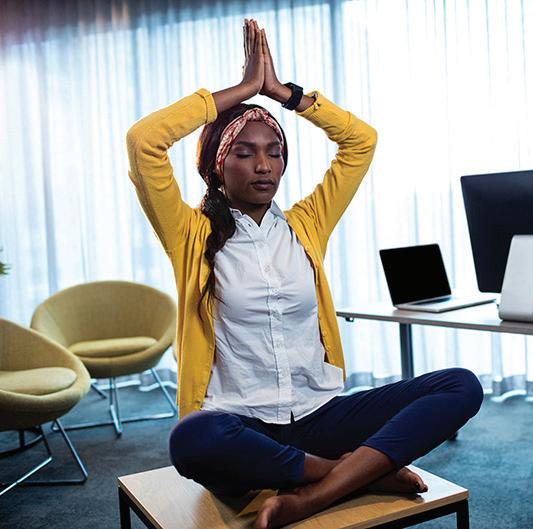


Along with the advance of the Great Resignation, the Quiet Promotion dynamic continues to gain a beachhead in the workplace, leading to greater risk of burnout among those choosing to remain in their jobs. “Quiet Promotion” refers to those tasked with managing more responsibilities in the workplace due to the expansion of employee resignations and absences.
Human resources guru Matthew Owensby of Aflac notes that employers, as well as employees, feel the pinch of all the turnover, and remain concerned that the personal suffering behind the resignation and promotion trends are here to stay. Owens notes, “A major concern of employee burnout is the impact on their well-being and how it affects engagement and retention.” In fact, an in-house study conducted by Aflac shows that in 2022, “more than half (59%) of American workers are experiencing at least moderate levels of burnout,

a notable increase over 2021 (52%) and on par with the levels reported in 2020 at the height of the COVID-19 pandemic.” Amid his insights on burnout and overall employee health, Owensby notes “employers are looking for new ways to offer benefits that help improve their employees’ mental health balance.”
For DAP Health, innovation means immediate access to resources and benefits that can address challenges in employee health before they become overwhelming. More about that in a bit.
Burnout is pervasive in the workplace and can sap employee energy and motivation. But what is it, exactly? Burnout is a state of emotional, physical, and mental exhaustion caused by excessive and prolonged stress. The phenomenon leaves employees feeling overwhelmed by their work, emotionally drained, and often being unable to meet the demands in their portfolio of responsibility. Unchecked, burnout can spill over into one’s personal life, impacting the quality of relationships, personal health, and the ability to find enjoyment in activities and routines that once offered joy. Perhaps the most vexing aspect of burnout is that it can be slow-moving. The symptoms of burnout may gradually increase over time, until the one impacted is well beyond a place of healthy functioning.
DAP Health Employee Wellness Specialist Desiree Loredo and People Operations Manager Trish Sisneros understand that people serving in organizations like theirs are especially susceptible to burnout because of all the time invested in patients at various levels of wellness. Coupled with the recent history and lingering impacts of a global pandemic, the daily stress of work in health care can wear down even the most resilient employees.
Both Loredo and Sisneros agree caregivers seem to be the worst at self-care, a reality that means prevention is not enough. Self-care measures must be continuous, varied, and exciting. One of the assumptions Loredo and Sisneros make in their wellness approach at DAP Health is that it’s okay to be human and not get everything done.
Inasmuch, Loredo and Sisneros are proponents of mental, physical, and emotional “breathers” for DAP Health staffers, so that these compassionate caregivers will have the stamina and passion to offer ongoing support to those who need care. Further, breathers are just good medicine for everyone. Stepping away from the demands of work from time to time elevates one’s quality of life.
For DAP Health employees, the benefits/wellness program continues to cultivate feelings of connection, longing, and value. Along with the typical health, dental, and retirement offerings

you might expect from an organization with a large staff, DAP Health also provides a host of wellness perks to employees that underscore ongoing self-care, not just prevention. With the complete support of CEO Brinkman and DAP Health’s board of directors, the benefits/wellness program includes partnerships with local fitness programs, credit unions, and other service providers; access to yoga, massages, and Transcendental Meditation (TM); mobile apps to manage personal wellness options and meditation; provisions for “self-care days” in addition to traditional sick leave; and, among other perks, the ability to use a DAP Health gym.
Of course, the real strength of DAP Health’s benefits/wellness program is that it is people-focused, not cost-focused. Not too long ago, DAP Health employees participated in an organization-wide survey to measure the impact of burnout and the health of employee/management relationships as related to wellness. Out of this important work, initiatives were put in place that create healthy dialogue among employees and management, while also honoring the importance of employee input in crafting innovative wellness offerings. Employee engagement with Transcendental Meditation is one of DAP Health’s noteworthy innovations.
Bob Roth, CEO of the David Lynch Foundation, understands the positive impact of meditative practice. “Research shows that a simple meditation practice can reduce stress, prevent stress disorders, and improve cognitive function,” he notes. With more than 50 years of experience teaching TM, Roth sees meditation promoting wellness in a way a traditional medical model cannot. For a DAP Health employee, a 45-minute TM session can potentially lower their body’s level of cortisol, a hormone released as part of the body’s “fight, flight, fear” response to stressful inputs. While pointing out that “stress is destroying workplaces, families, and health,” Roth believes that educating people about the benefits of meditation, and then encouraging them to adopt a meditative practice, will mean better wellness outcomes for many. The data, and the anecdotal evidence offered by DAP Health employees who take advantage of this novel benefit, affirm Roth’s work and assertions about the benefits of meditation.
Burnout is on the rise. The Great Resignation and Quiet Promotion phenomena are outward, measurable signs of the ways burnout impacts great organizations. Ultimately, however, great workers and the people who love them are the silent sufferers of burnout. Hopefully, novel and robust benefits/wellness programs offered by organizations like DAP Health will turn the tide and bring more joy and passion to the workplace.
A major concern of employee burnout is the impact on their well-being and how it affects engagement and retention.



As the sun shines vibrantly outside DAP Health, inside the main building, things are just as bright. That’s because Damian Calmett is waiting to greet people as they arrive. The cheery 73-year-old resident of Vista Sunrise, DAP Health’s affordable housing complex, is full of wide-eyed optimism. Clearly, the man loves being the organization’s chief greeter and safety monitor. On any given day, Calmett helps people find their way around, and even offers compassion or bits of life wisdom from time to time.
A ray of sunshine? That’s Damian Calmett.
“What’s important to remember is that DAP Health is a place where people come at various levels of their health,” he says. “You may be the only light somebody sees that day, or the only person they encounter because many people are shutins. So, if you can make their day a little lighter for five minutes, great. Then you’ve done a wonderful service.”
Calmett knows about the “light.” Because he’s spent a lot of time emerging from the dark. The multi-faceted yet unpretentious soul is somebody you’d want to know, and he swims deep emotional waters, waxing philosophical with ease: “I believe within each of us is a homing device that is good; we were born with it, and it leads us to a power bigger than us.”
In the next breath, he may be brutally honest about his own journey: “I’m no
stranger to homelessness, hopelessness, or hope, either. Or saying, ‘What is the lesson in this for me?’ Rather than, ‘Why is this happening to me?’ So, when I see people come into DAP Health, for me, it’s an opportunity to give hope.”
Calmett knows a lot about that. He had to rely on hope — even when he lost all signs of it — before he came on board at DAP Health in September 2021. And that’s where Calmett’s life story — a tale of heartbreak and triumph — becomes even more fascinating to explore.
Damian Calmett was born Stephen Bruce Ford in Salinas, California on January 30, 1950. Several days after his birth, the child’s mother left him, and he went to live with his paternal grandparents in nearby Castroville. Calmett says he got “saved” at their church when he was 2. Then his mother returned and took him back with her to Los Angeles, where they moved into a trailer with a man she’d been seeing, Willie.
“He was rough and tough, a ‘man’s man,’” Calmett shares. “What Willie said, you did. I was only 2 or 3 at the time, and more than anything, I thought I was going to die because he often waved a gun around and was drunk and acted like a crazy man.”
Calmett’s mother worked at a nearby bar. One time, when she wasn’t home, Willie

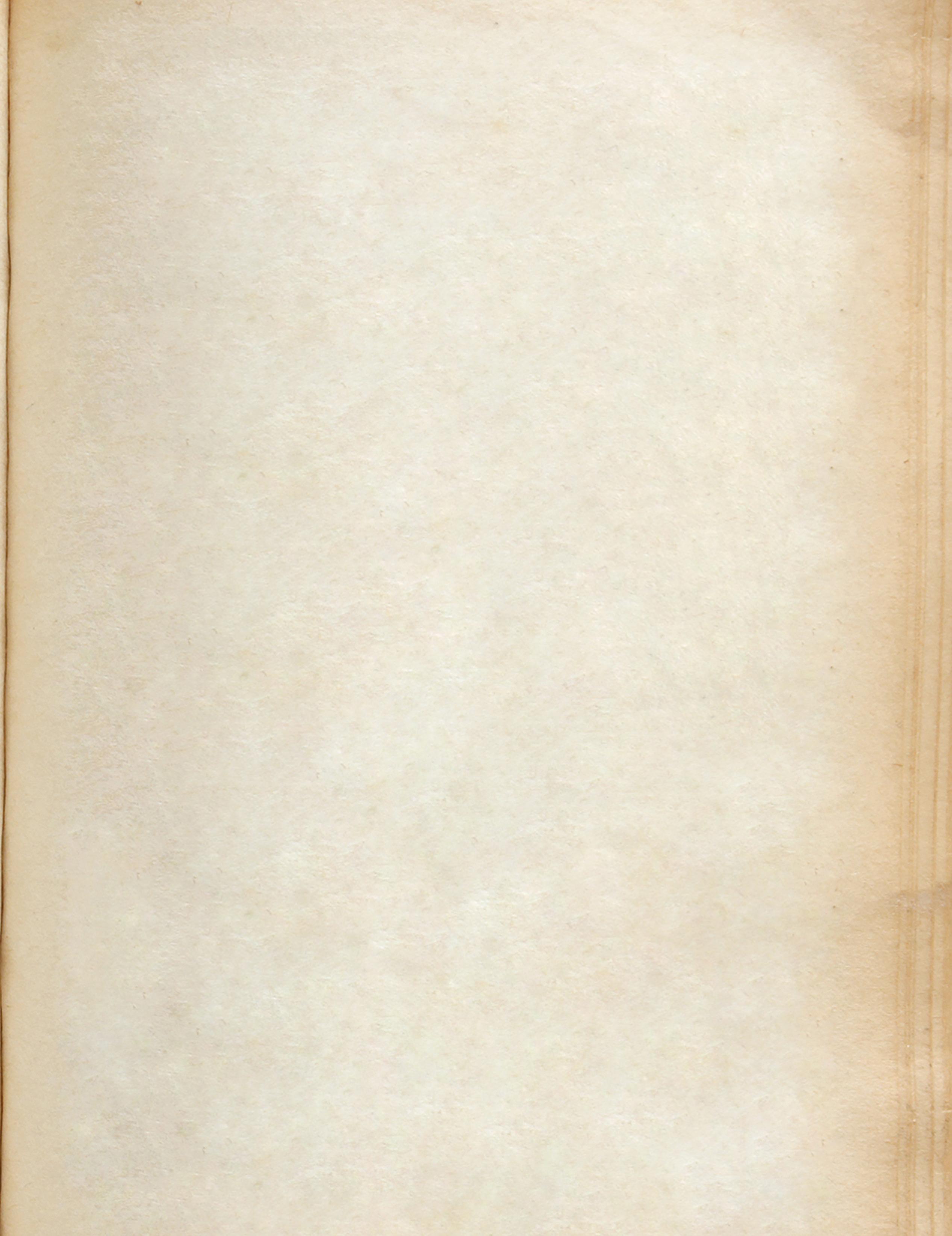
“put the gun [with one bullet] in my rectum and proceeded to pull the trigger. I was terrified and probably also in shock. He had been abusive before, and each time the abuse got worse.”
What followed was a nightmarish labyrinth for any human to walk through. When Willie left for good, Calmett’s mother didn’t hang around much longer, and the child was tossed around from home to home.
First, there was Shirley and her husband, and their four children, in a single-wide trailer, where, Calmett says, “we ate hot dogs every day for almost three months, and I slept in the hall closet.” When the family abandoned him, he spent three days alone — or three weeks, he cannot remember — until a man name George, who frequented the bar where Calmett’s mother worked, arrived with his wife. The couple took the boy with them to Grants Pass, Oregon, but Calmett had shut down emotionally and quit speaking. He was given a new name, George Jr., but something ominous always lurked in the shadows.

George drank and always fought with his wife. When he disappeared, Calmett was taken in by the couple’s friends and was given yet another name — Richard. Eventually, he went to live with his maternal grandmother, Mary, and her husband Earl, in Compton, California. Earl was a gunslinger, which brought up disturbing memories of Willie. Somewhere in between, Calmett had to learn how to speak again, and when his paternal grandparents found him, he returned to Castroville, shaken, distraught, and full of trust issues.

“As long as I can remember, I always wanted to be someone else,” Calmett
comfortable in my own skin.”
Then fate stepped in…
Years later, having coped and dealt with tremendous psychological maelstroms, Calmett was asked to be one of the Gospel singers at an Oakland concert. Inspired by the performers, he found something that had been missing — himself. Could he, in fact, be as freespirited as some of the entertainers around him? Something shifted within. Calmett legally changed his name to Damian — just Damian — and went on to perform worldwide in several mediums, hope and perseverance becoming major throughlines in his life.
Inspired to delve inward, he attended Oral Roberts University and at times, sang as a soloist on Jim and Tammy Faye Bakker’s “The PTL Club.” “I knew Tammy Faye,” he recalls. “She was genuinely naïve, and her eyes were full of love. But those long lashes were simply her armor against people getting close to her.”
When he took a position as associate pastor at a Southern California church, pressure mounted — all the other pastors had wives. The writing was on the wall. “My marriage to my wife, Kathy, was more or less an arranged marriage. I hosted a television program called ‘This Is Your Life,’ and Kathy’s parents saw me on TV and drove 100 miles to meet me.”
That was around 1985. Eventually, Calmett left the church — and his marriage to Kathy — and moved to San Diego’s Hillcrest area. “I had difficulty fitting into the gay world,” he admits. “Things were awkward for me. I was about 34, and I didn’t get why the leather guys didn’t want to associate with the drag queens, the bears, otters, lipstick lesbians, and dykes. For a community claiming to be so inclusive, well, it was anything but.”
One Halloween, he dressed in girls’ clothes. “I felt pretty and got attention,” he says, adding, “I never felt handsome as a man. As strange as it might sound, there was a sense of realness I felt [dressing up]. It was natural for me. In 1992, I had three titles — Mayor of Hillcrest, Mr. Gay San Diego, and Miss Gay San Diego.”
A stronger sense of self emerged. So did another personality: Ivana.
“For so long, I was just ‘Ivana,’” Calmett says of his famous alter ego. “I opened for Joan Rivers once, and let’s just say I drank a bit too much that night. Joan said, ‘Ivana, you’re just a tramp! Ivana Tramp. That’s who you are.’ The name stuck. I saw a different part of myself. Nobody ever referred to her [Ivana] as a drag performer, or as an impersonator. She was just who she was.”
Calmett performed as Ivana Tramp for nearly 20 years — from the Debbie Reynolds Hollywood Hotel in Las Vegas to the MGM Grand Sanya in China, and then some. “I realized that I’m more than one person,” he reflects.
Through the years, Calmett lived in

more than three years ago, he brought with him decades of life experience. He’d become an alcohol and drug counselor, and was a sober-living manager at one point. He also remarried between Ivana Tramp and Palm Springs, taking on the surname of his husband, David Calmett. Their marriage lasted about seven years. “Relationships aren’t the thing that I do best,” he says.
Still, Calmett used his latest move to Palm Springs to fuel a burning need: to instill hope. In addition to overseeing the welcome desk at DAP Health, he manages a 20–25 volunteer staff and makes sure everyone is trained on how to be “welcoming.” While he’s been a minister for many years, he recently became an Innerfaith minister. As Rev. Damian Calmett, he inspires hundreds of thousands online, and oversees a congregation at Innerfaith New Thought Spiritual Center Palm Springs. He says he’s ready to embrace what lies ahead, too, keeping in mind how he can best “serve.”
When asked what got him through the tough times, Calmett is candid: “We can either choose to go through challenges or grow through them. You don’t evolve, you unfold.


“I’ve had 10 lifetimes full of experiences,” he quickly adds. “I’ve met and worked with famous people. And I’ve met and worked with people who were in the gutter. These are all the same people. People are just people. I’m a survivor. So, I do what it takes to put one foot on the ground and the other foot forward … and just keep going.”
Learn more about Damian Calmett at
“We can either choose to go through challenges or grow through them. You don’t evolve, you unfold.”Calmett today at DAP Health.
“I’ve always wanted to work with chronic illness,” reveals longtime DAP Health employee Zayda Welden. “So, when I had the opportunity to work with this group of individuals with this horrendous disease at that time — HIV/AIDS in the early ’90s — I was very interested.” Today, after more than 27 years, Welden is one of DAP Health’s most senior employees, and is still doing what she loves — caring for other people.
An Ecuadorian native, Welden had been working previously at a farmworkers’ clinic — El Progreso Del Desierto — in the Coachella Valley. “No one wanted to run this subcontracted program to manage HIV-positive individuals,” she recalls. “Everybody was afraid. So, I told my boss, ‘Let me run it.’”
Through that position, Welden was introduced to the Desert AIDS Project (as DAP Health was then known), and when her previous clinic closed, the nonprofit offered her a job as a case manager. Welden remembers her first day on the job. “When El Progreso closed, I brought all these clients with me so they wouldn’t end up without care. I remember it was February 20, 1996.”
Since then, she’s had the chance to see DAP Health grow and change along with cultural attitudes toward queerness and HIV stigma. Welden’s also moved up the ranks, from case manager to director of social services — a role she helped reshape so as to better allow for time with her family. But over the years, the biggest change she’s seen has been in patient outcomes. “HIV infection, for the most part, is now a very manageable condition,” she says, “if you partner with your primary care physician and stick to your treatment.”
As with any chronic condition, the goal of treatment is quality of life. Now, as director of social services, that’s the mission Welden oversees: “Food equals health, housing equals health, transportation equals health. We need to address all the determinants of health that negatively impact our patients.”
Food services for HIV-positive patients and clients has been a staple of DAP Health for years, but as the organization’s clientele has expanded, clinicians and case managers have encountered more and more food insecurity. Now, through a partnership with the local FIND Food Bank and other funders, immediate food distribution and referrals to other food banks is a default part of DAP Health’s care. “Every single patient that gets to see a clinician is asked a series of questions,” says Welden, “including, ‘Have you eaten today?’ ‘Do you have food for today?’ ‘Would you like to have a bag of basic staples for the next couple of days?’” Every patient who’s in need of food leaves the clinic with a grocery bag to last for the next two or three days, along with other community food resources information.
For HIV-positive patients and clients, even more resources are available. One such patient is Brett Ward, a Palm Springs resident who went to DAP Health for information and medical care after his partner passed away from AIDS complications. With two kids to care for and his own disability, his case manager helped him find access to more than just food assistance. “At the holidays, they would give gift cards to my children,” says Ward. “They give gift cards for the beginning of school, for school supplies. They’ve helped me a lot, as far as the extras and now the costs of being a single dad… I was using [a program] where they reimburse you for gas mileage and such. I use them for dental because I don’t have dental insurance.”
Lack of health insurance is unfortunately not an uncommon problem in the Coachella Valley, with 15% of those 16–94 years of age living without, compared to the 10% state average. Combating that kind of disparity, with everything from sliding scale payments to providing housing, is the core of DAP Health’s social services programs. Welden says everything they do is to keep clients in care. “Treatment adherence is so important,” she maintains. “We’re trying to help them with rent, with a bus pass to come to the doctor, and with food so they can keep taking their medication.”
Welden adds that housing insecurity is also one of the major roadblocks to consistent and effective care. “Just 20 miles east of Palm Springs, we have one of the poorest areas in our state. We have migrant workers who live under trees who are not housed, who have to go to work the next day.”
To better aid those individuals, the Vista Sunrise I housing complex, with 80 units, was opened for HIV-positive clients in 2007. With the success of that first initiative, Vista Sunrise II is now underway, which will make 61 more units available, not only to HIV-positive individuals, but to anyone who meets the low-income threshold.
On top of that, Welden says she has something new in mind for Vista Sunrise II: “I’m planning to hire a housing case manager who will be able to do the same things case managers do with an HIV-positive caseload. They’ll oversee the residents of those 61 new units and improve their social determinants of health, whether it’s providing service or assisting in other ways. We’re not just going to drop people in the housing and say, ‘Okay, pay your rent on time, keep it clean, and see you later.’”
Clearing roadblocks to health care is at the core of DAP Health’s mission. “We are here to improve the well-being of every member of our community,” Welden concludes. “Our mission has not changed. Before, it was focused on HIV/AIDS. Now, it’s open to whoever needs us. Providing the widest safety net possible. That’s what DAP Health is all about.”

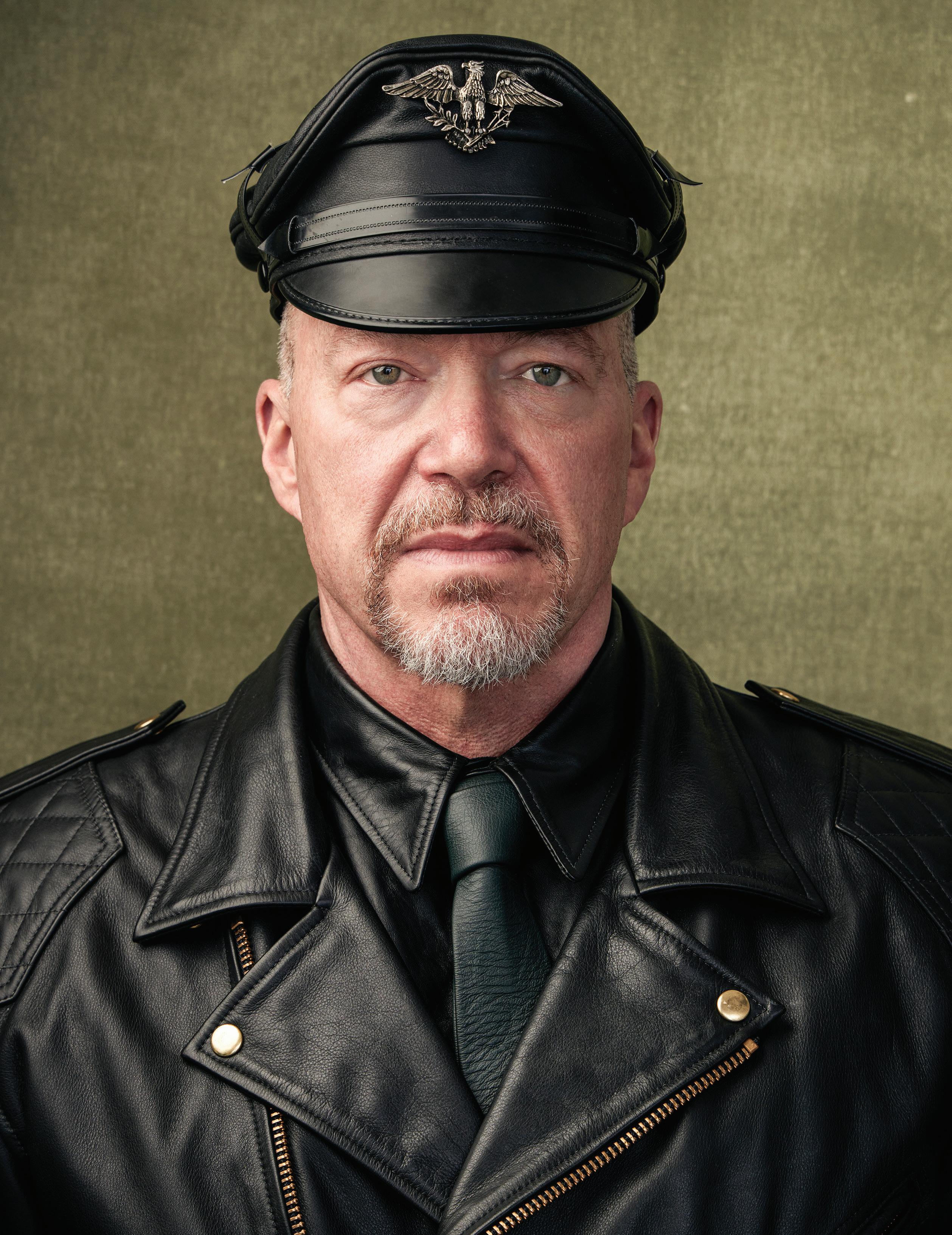 PSLOD President David Dunn
REVIVALS
ITS CHEEKIER SIDE
PSLOD President David Dunn
REVIVALS
ITS CHEEKIER SIDE
Voted Best of the Desert thrift store and furniture store, DAP Health's Revivals Thrift Store brand offers visitors many unique treasures. Beautiful midcentury modern furniture and eclectic fashion finds, of course, but also — if you come by the back alley after closing on just the right night — leather harnesses, chaps, cat o’ nine tails, rare erotic artwork, and a plethora of other adult-centric goodies.
“Just the right night” is whenever Revivals After Dark, the store’s 18-and-over evening event, occurs. Revivals first hosted this pop-up sale four years ago to sell items inappropriate for the family-friendly retail space’s regular hours and racks. It’s since become a semi-annual, highly anticipated, and buzzy community event. Like general sales from Revivals, all Revivals After Dark proceeds go to support DAP Health patient and client services, and more than $70,000 has been raised since its first outing.
“This is a win-win-win,” says Revivals volunteer Mark Musin, who has spearheaded Revivals After Dark since 2020. “You get to get rid of some stuff that you loved, that you had great memories with, and pass that along to someone else.” Musin adds those beloved items have included vintage leather chaps, adult movies, vintage photographs, and even a sex sling or two. “You should see the people who buy these things! They are so thrilled.”
More than just a clothing sale, Revivals After Dark, which takes place outside, behind the four-store chain’s Palm Springs location, has a party-like atmosphere. It’s a place not to just get a great deal — with a leather harness going for as little as $25 — but to see and be seen. Past events have featured DJs and Mr. Palm Springs Leather contestants modeling looks. It’s not uncommon to see strapping fellows stripping off clothing to try on a leather vest. It’s fun that also makes an impact.
“It’s a great opportunity for us to get together, which is really important for the leather community,” says Palm Springs Leather Order of the Desert (PSLOD) President David Dunn. “And Revivals provides a fun, and somewhat different, environment in which others can be introduced to us. It’s awesome!”
PSLOD, a nonprofit dedicated to supporting the leather, kink, and fetish community of the Coachella Valley, has been a partner with Revivals at all the After Dark events, promoting it widely to its membership and being on hand to answer any leather- and kink-related questions curious shoppers may have. PSLOD also receives $1,000 in donations from each event.

“The leather community has a lot of purposes and a lot of goals, but one of them is philanthropy. Another is supporting the community,” says DAP Health Director of Brand Marketing
Steven Henke. “PSLOD’s mission is to build a stronger, healthier community — and that’s DAP Health’s mission as well.”
The initial idea for Revivals After Dark — as well as the partnership it would solidify between DAP Health and PSLOD — emerged from pure happenstance. Henke recalls walking through the Revivals warehouse one day and noticing a large pile of books and magazines of a “more adult nature.” When a volunteer explained they were too graphic to put out in the store and that there were many more items like that in the Revivals trove of donations, Henke realized there was an opportunity to do a uniquely private event that connects with members of the leather and fetish community while raising funds for DAP Health.
The first Revivals After Dark occurred inside the Revivals Palm Springs store in 2019, featuring merchandise laid out in the aisles. To everyone’s delight — but not necessarily to anyone’s surprise — it was a hit, raising nearly $6,000 in 90 minutes. A second event seemed like a no-brainer, but 2020, with its ensuing global pandemic, required getting creative. So, Revivals After Dark moved from inside the store to the alley outside — with clothing racks and tables of merchandise set up al fresco. In doing so, it fully crystallized into the form it was perhaps always meant to have. “It has a vibe that fits the merchandise really, really well,” says Henke of the backlot setting.
In November 2020, the second back-alley Revivals After Dark proved to be even more successful, with more than 200 people lined up, masked and socially distant, hours

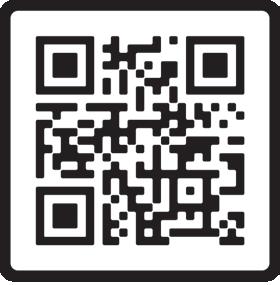
before the event’s start time. Since then, there’s been two sales a year and the curation of items available, led by Mark Musin and a squad of Revivals volunteers, has grown more expansive.
Musin emphasizes that it’s not just leather gear or material of interest to the leather community that’s on sale. The product mix his team puts together boasts a wide array of fashion, erotica, and kink objects favored by the general LGBTQ+ community. According to Musin, shoppers have included young people and older alike, an expansive gender spectrum, as well as residents from every corner of the Coachella Valley.
For many, the history of some objects also adds to their allure. At the Revivals After Dark in June, Bob Miller, a Desert Hot Springs resident who has long been involved in the leather community and describes himself as “a boot guy,” was surprised to meet another boot collector who had donated about 50 pairs to Revivals. The man had lived abroad in Europe, where he collected various rare and heritage boot brands, maintaining them in immaculate shape. Miller snapped up about seven pairs at a great price, each with an intriguing backstory, um, to boot!
“I get most excited about the vintage photography and oil paintings,” says Henke, noting that these objects are often created by, or feature, gay men that may no longer be with us. “This is our history… They beg to be remembered.”
With history in mind, Musin and his team often consult with historians and organizations like the Tom of Finland Foundation to make sure they’re appropriately handling any rare or historically significant donations.
For Dunn, speaking on behalf of PSLOD, Revivals After Dark also represents his community’s future. It’s an event that can demystify leather, kink, or fetish communities to those who may be curious. Given the affordable price tags, it’s a more accessible place to start a leather collection, spring for a set of quality restraints, or acquire whatever article expresses a part of one’s identity yet to be explored. “It’s a very sex-positive event where there’s no shaming of anyone,” says Musin. “There’s a place for everyone.”
Given the lines at the door and the fact that the harnesses sell out in mere minutes, everyone indeed seems to have gotten the memo about Revivals After Dark.
We Are Family, continued from page 13
Lindquist says the Karps are living proof that, “If you find something that you are passionate about, or that has changed your life, or that has meaning to you — find a way to support it. You don’t have to be a millionaire to be a philanthropist, you just have to care.”
Scots says he and Lance agree. “True philanthropy is, no matter what you have, you give something,” he reflects. “It may not be giving of financial backing. It may be giving of your time, giving of your support, or giving of your enthusiasm about an organization or a cause.”
The men truly prioritize causes where they can see results in their lifetimes, and while they may never know all of the names of the people they’ve impacted, Lindquist says they’re aware of the thousands of people whose lives they’ve changed. “I think that’s got to be the greatest gift of philanthropy,” he concludes, “when you can do it when you’re still alive.”
To follow the Karps’ example, contact DAP Health Director of Development James Lindquist at 760.656.8413 or via JLindquist@DAPHealth.org.

Keisha D Mimms has played many roles in her life — daughter, sister, wife, mother, businesswoman, actress, chanteuse — but the one she was unwittingly cast in five years ago might be her most challenging.
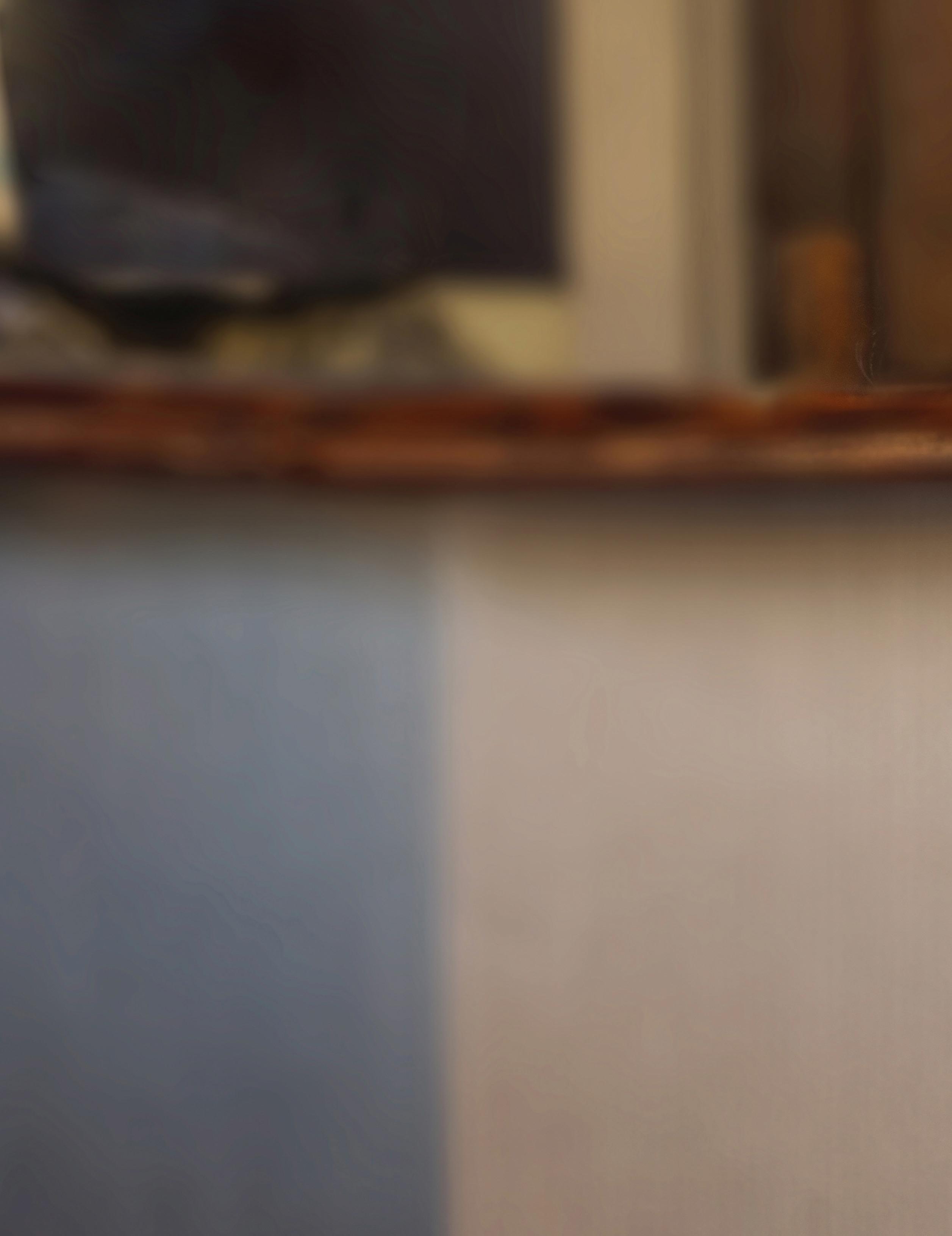
More than a decade ago, when Mimms stepped on the stage at McCallum’s 2008 Open Call, she and the Coachella Valley instantly began a fierce love affair. No one else stood a chance. She is a powerhouse singer with a soulful, richly textured voice and a smart, playful stage presence. She doesn’t steal hearts, they’re offered.
“I remember being so impressed and so awestruck when she performed,” says local entertainer Brian Wanzek, perhaps better known by his drag queen alter ego Bella da Ball. “I sent — I think it was an email — to the person involved with the Open Call and asked, ‘Is it possible that you could either give her my number or you could give me her number?’ I just wanted to chat and talk about opportunities to work with this fabulous, talented superstar.”
Not only was Wanzek playing multiple clubs around town with his drag extravaganza, Delicious Divas, he was involved with multiple charities. Mimms was interested in giving back too, and a beautiful friendship and symbiotic working relationship coalesced. She sang for LGBTQ+ charities, including Palm Springs Pride, the LGBTQ Community Center of the Desert, The L-Fund, and many more.
Billed as Keisha D Sings, she’s got a big voice, which came in handy in choir, and on the mission-based tours where her pastor father preached, and her mother and she sang. Anyone who’s heard her belt out gospel knows she can get an “Amen!” out of a diehard heathen.
EVEN WHEN SHE WAS SURE SHE WAS ABOUT TO LOSE EVERYTHING, BELOVED DESERT ENTERTAINER KEISHA D KEPT ON GIVING
Words by Kay Kudukis • Photos by Matthew Mitchell
Mimms attended Christian high school but, “I started singing in nightclubs when I was 16, I was sneaking in,” she says, chuckling at her cheekiness. “We were just sitting in with the band. [I sang] ‘Summertime,’ ‘Come Rain or Come Shine.’ Anything Ella Fitzgerald.”
She received a vocal scholarship to Azusa Pacific, an evangelical Christian university where she did musical theater and opera. In fact, her favorite musical memory is not jazz, gospel, or Motormouth Mabel in “Hairspray.” It’s the titular character in Puccini’s “Madame Butterfly.” “That was just the highlight because I nailed it,” she says without a drop of ego. “This is something I never thought I could do.”
She moved to Palm Springs from Riverside for a position with a mortgage firm, but Wanzek wasn’t the only one who’d seen her perform at Open Call. Mimms was immediately in demand: The Purple Room, Vicky’s of Santa Fe, PS Underground, some clubs that have come and gone. But one thing remains the same. Her philanthropy.
“She’s been working with me and the Club probably for 12 years,” says Jan Darlington of the Palm Springs Woman’s Club. “She’s performed at benefits for us many, many times.” The charitable organization has been raising money for scholarships for Palm Springs High School students for the past 85 years.

“I know who you are. I know what you do in this community.
And if there’s one thing I’m not going to do,
Five years ago, Mimms began an unplanned journey: she started losing weight. Quite suddenly, she was half of her former self. She was performing, but her appearance was alarmingly delicate. Fans asked, “Is Keisha OK?” What they didn’t know — but what her best friends David Bader and Michael Shiplett knew — was that Mimms was very much not OK. The once energetic performer could barely drag herself out of bed. She was in constant, excruciating pain, and had recently stayed 14 days in the hospital with neither relief nor answers.
“When I got out, [Bader and Shiplett] took me back to my house,” she softly recalls, her voice catching. “They were with me on the phone in the middle of the night. I would be just crying in so much pain. It’d be 11:30 at night, they’d knock on the door, and then put me in the hot shower — that helped. I couldn’t shower alone.”
Bader and Shiplett suggested she try DAP Health, but Mimms demurred. She wasn’t unfamiliar with the great work the nonprofit was known for — she had donated her time as a performer for fundraising events, and for silent auctions for private concerts. It was a demographics issue.
“I’m not a guy and I’m not gay. And I don’t have AIDS. I know it’s not AIDS. We already ruled that out,” Mimms says.
Like countless others, Mimms misconstrued the breadth of DAP Health’s services. Many aren’t aware DAP Health is also a Medi-Cal and Medicare provider through Inland Empire Health Plan (IEHP), the largest not-for-profit Medi-Cal and Medicare health plan in the Inland Empire, and one of the fastest-growing health plans in the nation. Those who have
fallen on unfortunate times can apply and choose from DAP Health’s exhaustive menu. The organization has programs and employees that cover virtually everything, including mental health and chiropractic care.
Bader and Shiplett called DAP Health and explained Mimms’ condition. “Within two hours: ‘Hello. I’m from DAP. I’m an intake nurse and we want to schedule you for an appointment for tomorrow,’” Mimms recalls. When she arrived, Chief Medical Officer Dr. David Morris was waiting.
“The first thing I said was, ‘Just help me die. That’s all I’m asking you to do. I don’t need your medicine. I need you to help me die. Please.’” There is no drama in Mimms’ voice, but the memory of the moment is absolutely palpable.
“He took my hand and said, ‘I know who you are. I know what you do in this community. And if there’s one thing I’m not going to do, it’s help you die. You will live under my watch. We’re gonna figure out what it takes to help you live.’”
If the horrors of the AIDS epidemic taught anyone anything, it’s that it takes a village. Morris secured an appointment for Mimms at the world-famous Loma Linda University Medical Center. After some rigorous testing and diagnostics, Mimms had a diagnosis: systemic lupus erythematosus (SLE), an autoimmune disease. From the CDC’s website: “The immune system attacks its own tissues, causing widespread inflammation and tissue damage in the affected organs. It can affect the joints, skin, brain, lungs, kidneys, and blood vessels. There is no cure for lupus, but medical interventions and lifestyle changes can help control it.”
it’s help you die. We’re gonna figure out what it takes to help you live.”
“As a kid, I had everything. If I was in cheer, I got a cheer outfit: the shoes, the jacket, the letter. I’m seeing these kids

Mimms’ illness spurred her to develop a scholarship fund with Palm Springs Unified School District. That journey began years ago when her daughter took dance classes at Palm Springs High School. Her young teacher was having a tough time with some students. Mimms had credentials, and volunteered to help. “So, I started working with these kids,” she says. Not just her daughter’s dance class, but all the classes. “Then it went to working with the orchestra, and teaching vocals to the jazz kids. So, I was singing with the kids, dancing with the kids, and talking to the kids. They called me Mama K. I couldn’t get to the counter [without], ‘Mama K, Mama K’ and hugs, hugs, hugs.”
Even though the last five years have been challenging, Mimms has still supported DAP Health by participating in its “Hope Begins with Health Care” televised special and by serving as a storyteller at the weekly IMPACT Hour tours (a by-invitation-only backstage visit of the facilities for prospective donors; please see separate story on page 78).
With her new regimen, Mimms is looking and feeling much better. Her pain is regulated so well that she recently did a show with her band, Hearts of Soul, at the Palm Springs Cultural Center (PSCC). Part of a series celebrating Black female singers, the first featured Chaka Khan and Tina Turner songs. “We had
Budgets were tight for some families. Instruments, uniforms, and bus tickets for events were a low priority. So, Mama K provided. “As a kid, I had everything. If I was in cheer, I got a cheer outfit: the shoes, the jacket, the letter. I’m seeing these kids trying to get to college. That’s why I started the Keisha D Music Scholarship. Every year, seniors can apply for funds. I have a friend, he’s a philanthropist as well. He said, ‘I’ll match dollar for dollar up to $35,000 every year, but you gotta raise it.’ Every year since, I’ve raised … maybe a little less than $30K. He matched it.”
In 2020, Mimms received a star on the Walk of the Stars Palm Springs and recalls the shock at seeing pictures of herself at the unveiling. “I looked like Skeletor,” she says, grimacing.
Today, Mimms’ all-around care is monitored by Dr. Morris and his handpicked Keisha D team. “They’re keeping me comfortable,” she says, “and they’re keeping me well. They’re doing a fabulous job.”
dancers and everything,” says Mimms. “I can’t believe I was able to do that.” She also has Soulful Sundays at PSCC; Wednesdays at Mr. Lyons; Thursdays, Roost in Cathedral City; and Fridays at the kitschy PS Air Bar. She stays busy.
Mimms sings a song from “Hairspray” that is Wanzek’s favorite. Sung by Motormouth Mabel, it’s the title of this article, and seems to encapsulate Mimms — past and present. In fact, it seems to speak to her core being. Here’s Mabel talking: “What do we do when we see something wrong? We fix it. And I’m here to tell you, I’m going to keep on trying!” And then, singing: “There’s a struggle that we have yet to win. And there’s pride in my heart, ’cause I know where I’m going, and I know where I’ve been.”
Amen, Mabel. Amen!
trying to get to college. That’s why I started the Keisha D Music Scholarship.”
“There’s pride in my heart, ’cause I know where I’m going, and I know where I’ve been.”

Tom (not his real name) is a tall, thin, handsomely weathered 67-year-old Maui native raised in Long Beach. He’s been HIV-positive for 17 years, unhoused in Palm Springs for 12, and a moderate crystal meth user for 10.
He discovered DAP Health’s Harm Reduction Program about a year ago, thanks to his daily attendance at Well in the Desert’s hot meal service. DAP Health’s team — Community Health Harm Reduction Supervisor Neil Gussardo, Educator Bree Clark-Pharr, and longtime volunteer Suzanne Petersen — shows up twice a week at this location. Tom recalls that, without any reservation, he jumped at the chance to benefit from their provision of clean bubble bowls, which are the part of glass pipes where methamphetamine is heated.
“They’re completely compassionate,” Tom says of Gussardo, Clark-Pharr, and Petersen. “They’re sensitive to your needs. They want you to have the safest equipment for your drug use. They’re very supportive without ever pushing recovery on you.” In fact, he recommends the program to all his unhoused friends who use drugs.
Gussardo is no newcomer to serving people experiencing substance use disorder. He has worked in the field for more than 20 years, beginning his career in San Francisco, then transitioning to the Betty Ford Center in Rancho Mirage. He has been with DAP Health since February 2022, and explains that the Harm Reduction Program has two priorities. The first is to provide equipment that will reduce the transmission of HIV, hepatitis C, and other illnesses.
Specifically, the program provides fresh syringes, gift cards as an incentive for those who bring in used syringes, alcohol swabs and cotton filters for injections, test strips to determine if a more dangerous synthetic opioid like fentanyl is mixed in with other drugs, cookers to help convert drugs in solid form to liquid, and clean pipes, glass bubble bowls, pipe extensions, and foil used in smoking opiates.
The second priority, Gussardo says, is to distribute opioid overdose treatments proven effective, such as injectable naloxone and the nasal spray Narcan (recently approved for over-the-counter sales by the FDA, and likely available by late summer). Persons who overdose cannot typically self-administer such aids, so the products are provided to fellow users who can come to the rescue should need be. Proper training for administering overdose therapy is provided as well.
The reaction to this program has been positive. But occasional negative comments are not uncommon from passersby who learn what services Gussardo and
his colleagues supply. “We absolutely encounter folks who think we’re enabling drug use rather than reducing the risk of harm,” he says, adding that by diminishing disease transmission, the program is saving society a considerable amount of money and time spent treating people infected with HIV or hep C. “We’re helping alleviate a drain on the system, person by person.”
More importantly, according to Gussardo, “It’s been reported to us from our participants that they’ve used either naloxone or Narcan provided by DAP Health to reverse 104 overdoses from September through January. That’s 104 lives saved.”
The Harm Reduction Program took root in the middle of 2022, at a time when overdoses from fentanyl had become an epidemic throughout the country. The drug is a legally prescribed painkiller, but in the last 10 years it has become a widely used street drug that’s up to 50 times stronger than heroine and 100 times stronger than morphine, according to the Centers for Disease Control and Prevention (CDC). It’s often added to other drugs because of its extreme potency which, according to the CDC, makes substances cheaper, more powerful, more addictive, and much more dangerous. The number of overdose deaths involving fentanyl, the CDC reports, shot up from 1,615 in 2012 to more than 71,000 in 2021.
According to the California Department of Public Health, there
We’re helping alleviate a drain on the system, person by person.
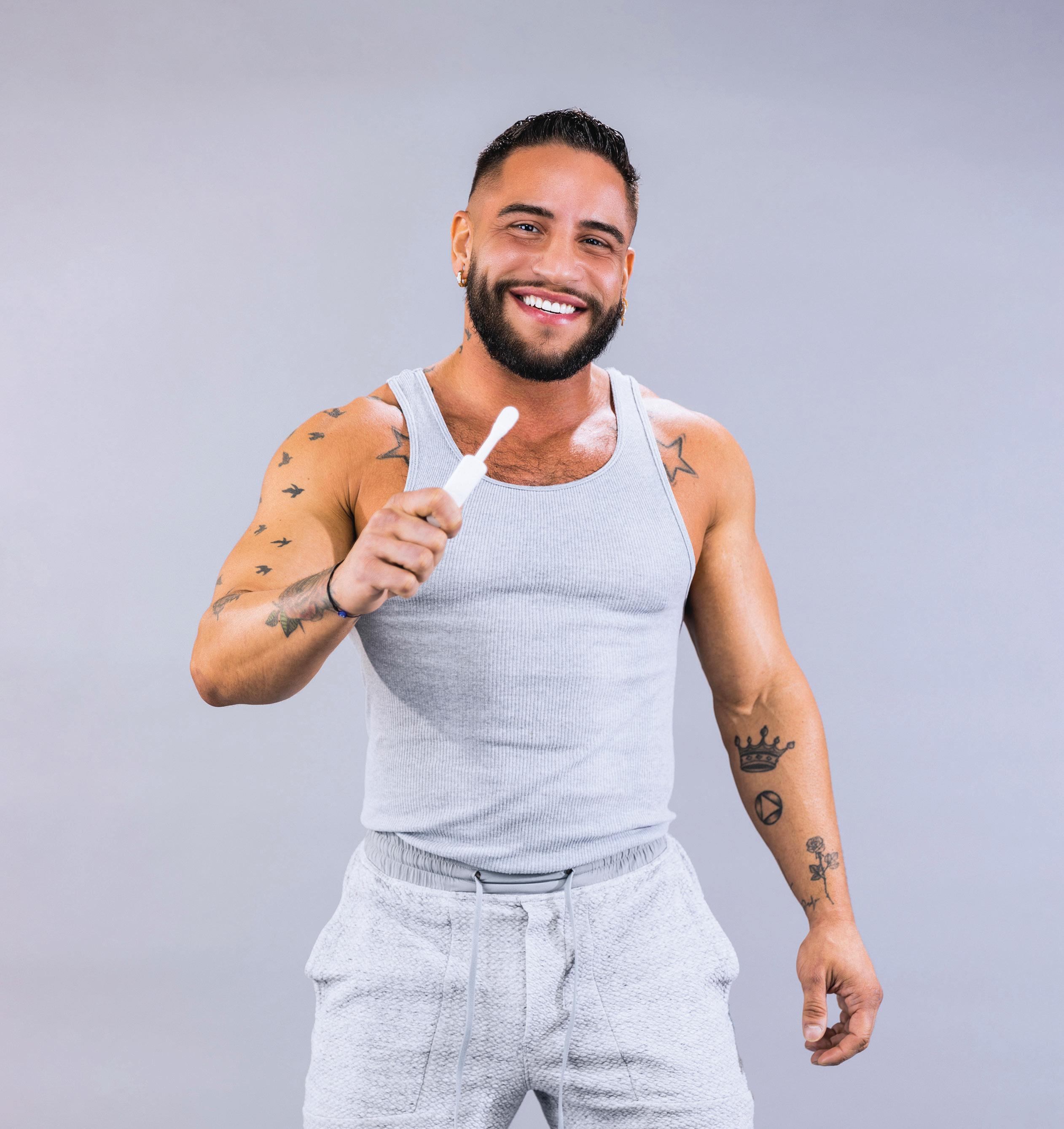

were 408 overdose deaths involving fentanyl in 2021 in Riverside County. Statistics on confirmed overdose deaths for 2022 are not yet available. Sheriff Chad Bianco told City News Service last October that the rate of fentanyl poisonings is soaring, and that the number of confirmed deaths “is going to increase significantly.”
The majority of participants in DAP Health’s Harm Reduction Program, Gussardo says, are unhoused. Twice a week, his team drives its van to churches on the western end of the Coachella Valley, linking arms with the aforementioned Well in the Desert, a nonprofit that provides hot meals five days a week for working poor, persons without homes, and others.
When Gussardo, Clark-Pharr, and Petersen aren’t with Well in the Desert, they look for encampments. And if people at these locations are interested, the team works with them, too.
“We’re not doing counseling,” maintains Gussardo, “but we do see people on a repeat basis. Sometimes we see the same person twice a week. And we’re building a rapport with them, building trust, and providing referrals for additional services.”
Gussardo reveals the Harm Reduction Program has started reaching out to another group he refers to as “the party and play crowd” — gay men who, in sexual situations, occasionally use crystal meth, and who “potentially share syringes” — by establishing a Thursday evening presence on Palm Springs’ Arenas Road, where
a number of gay bars are located. While still in its infancy, that initiative is slowly but surely building a clientele.
Next steps, Gussardo says, will include strategically based vending machines allowing for 24-hour access to complimentary safer-use materials such as Narcan and clean paraphernalia.
One theme Gussardo stresses in terms of harm reduction generally is how much of the population stigmatizes those who use drugs. Based on his experience in talking with those who use, he says that when these people reach out for help, they’re often met “with all the stigma of addiction. They’re met with people who don’t treat them as human beings, which then becomes a barrier to any kind of treatment.”
Part of the solution, Gussardo maintains, would be to reference “a person who uses drugs” as simply that, or as a person with a substance use disorder — rather than as a drug addict. This is part of a “people first” use of language to reduce the impact of stigma that Gussardo and other Harm Reduction team members emphasize.
Does this approach really work? According to Tom, it definitely does.
Anyone interested in receiving clean supplies is encouraged to visit DAP Health’s Harm Reduction team in the field. Call 760.323.2118, Extension 504, to inquire about schedules and locations.
 Just some of the complimentary safer use paraphernalia distributed by DAP Health’s Harm Reduction team.
Just some of the complimentary safer use paraphernalia distributed by DAP Health’s Harm Reduction team.
FOR A MORE POSITIVE HEADSPACE, AVOID THESE NEGATIVE BEHAVIORS
Words by Dr. Jill Gover
Ruminating on the negative has been linked to more amyloid and tau deposits (microscopic protein shards that decrease one’s capacity to think and remember) in the brain, which increases risk of developing Alzheimer’s Disease. Negative rumination is associated with a decline in cognition and memory in people over 55, and an increase in depressed mood. Negative self-talk arises from faulty thinking that overemphasizes the destructive aspect of a situation and neglects or ignores the positives. To counter these intrusive negative thoughts, therapists recommend writing a daily gratitude journal, practicing deep belly breathing techniques, learning cognitive behavioral therapy interventions to counter negative self-talk, and employing mindfulness strategies such as greeting the negative thought with “hello,” then telling it “goodbye.”
A recent study of adults 65 and over who had received the flu vaccine showed they were 40% less likely to develop Alzheimer’s Disease. Those who received the pneumonia vaccine were 30% less likely to develop dementia.
A 2022 research study found that sugar-sweetened beverages (soft drinks, sweetened tea, fruit drinks, sports drinks, and energy drinks) were linked to a decline in cognitive functioning. It’s better to eat whole fruits instead of fruit juice. Sugar is not good for the brain.
Quality sleep is crucial to a sharp, productive mind. Creating a consistent sleep schedule allows for more restoration. It’s important to go to bed and wake up at the same time every day, even on the weekends. Too much caffeine, or a room not cool or dark enough, can cause sleep problems as well. In addition, untreated sleep apnea can lead to memory and cognitive disturbances due to a buildup of amyloid material in the brain.
In a study of 639 adults aged 36–90, mild hearing loss was associated with double the likelihood of developing dementia. If someone else standing next to you can hear your earbuds, they’re too loud! If you’re standing within three feet of someone and can’t hear them, the world around you is too loud. It’s a good idea to wear earplugs at concerts, and to remove yourself from loud environments when possible. Continuously subjecting your ears to excessively loud noise when you’re young may harm your hearing and increase your risk of developing cognitive impairments later in life.
Tricyclic antidepressants, some bladder medications, and antihistamines can block production of the neurotransmitter acetylcholine. Studies have found that higher cumulative use of these drugs is associated with dementia. If you regularly take several of these drugs, ask your doctor about the risk of anticholinergics and if you should explore alternative medications.
Having a reason to get up in the morning contributes to healthy aging, and is an essential element of good self-esteem. Researchers at Rush Alzheimer’s Disease Center in Chicago found that those who scored high on a purpose-in-life assessment were 2.4 times less likely to develop the illness. Whether you are young or old, working or retired, it’s important to explore and create a passion project. Look for new opportunities to engage in something meaningful to you. Volunteer. Travel. Deepen your relationships with others.
Lackluster oral hygiene leads to buildup of bacteria in the mouth and inflammation of the gums, which untreated, can cause periodontitis. Poor periodontal health and tooth loss can increase risk of cognitive decline and dementia, as bacteria and inflammation can make their way from the mouth into the bloodstream, and eventually into the brain. Research has found that people missing several teeth had a 48% higher risk of cognitive impairment.
In a 2022 study at the University of Pennsylvania, researchers found that even moderate drinking can cause reduced brain volume in older adults. A 50-year-old who went from one alcoholic drink a day to two drinks per day had changes in the brain equivalent to aging two years. Alcohol interferes with brain functions such as speech, memory, judgment, and balance. Cutting back on alcohol is a smart strategy for brain health. It’s a good idea to avoid the urge to drink when you feel sad, mad, tired, or bored. When you drink alcohol to get relief from unpleasant emotions, you inhibit the ability to process and resolve those feelings, which can lead to negative outcomes later.
My professional advice: Eliminate as many of these bad habits as possible and you will improve your brain health and increase the likelihood of aging well!
We all want healthy aging, and most of us know a good diet and exercise are essential for a happy and healthy brain. That said, there are also a number of bad habits that can undermine cognition. Altering just one of the following nine bad habits can change how the brain works and help you age better, with reduced risk of dementia. Even people with memory problems can benefit from changing these harmful behaviors. Here are the nine bad habits that hurt your brain:
Larry Kramer said, “You don’t get anything unless you fight for it, united and with visible numbers.” It was the lesson he learned during the AIDS epidemic — one he wanted the LQBTQ+ community to learn. It was a lesson the professionals at DAP Health understood when the mpox outbreak started in May 2022.
The disease is caused by the mpox virus, similar to the variola virus (smallpox) and related viruses. It often causes a painful rash of blisters on the hands, feet, chest, face, and mouth — as well as near the anus, and penis and testicles, or labia and vagina —before scabbing and healing. It was a rare ailment until 2022, with the CDC reporting only two cases in the United States in 2021.
Then, on May 7, 2022, the United Kingdom reported its first incidence. On May 17, the first U.S. case was confirmed in Boston by the Massachusetts Department of Health. On May 23, a Sacramento patient was the earliest to be verified in California, and DAP Health saw its first local occurrence on July 8.
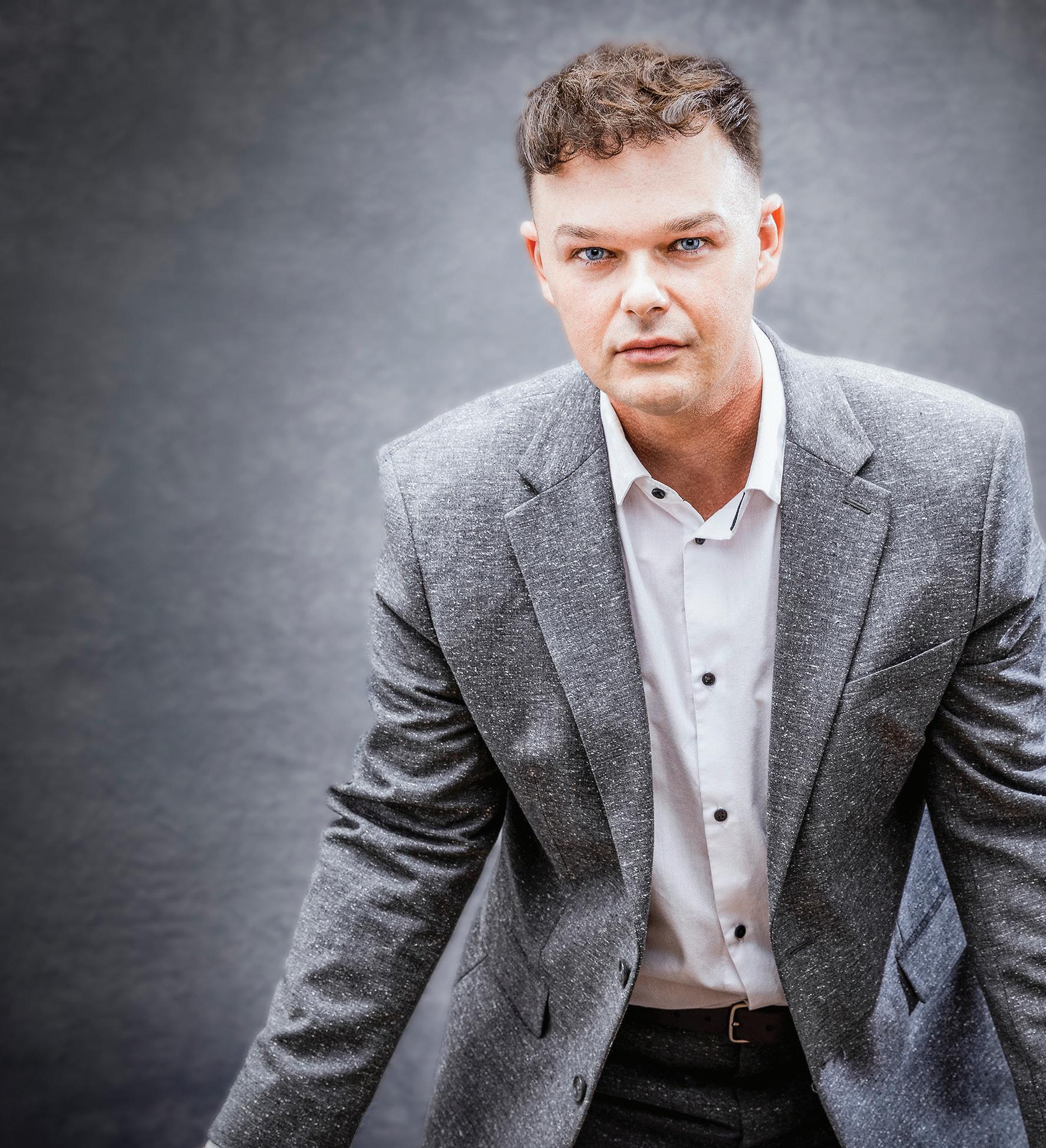
Fortunately, DAP Health was ready. The agency had formalized a task force devoted to mpox by the end of May in view of a potential outbreak hitting the Coachella Valley.
“We wanted to be proactive on where the clinical services would best be served, knowing we had to maintain operations in all other clinics,” says DAP Health Director of Community Health and Sexual Wellness C.J. Tobe.
The nonprofit already had a waiting list for primary care, and its sexual health clinic was seeing increased numbers of patients. Tobe and his team started by getting emergency authorization from the California Department of Public Health (CDPH) to use DAP Health’s “library” meeting room at the main campus in Palm Springs as clinic space. Also, taking cues from their recent experience with the COVID-19 pandemic, the powers that be knew they’d overburdened an already stressed staff, so they made arrangements for temporary workers to support the mpox response.
At that point, the vast majority of cases reported were in men who have sex with men. DAP Health needed to alert the community. It partnered with county and state health departments, attending weekly town halls. The agency’s mpox response team had triweekly internal meetings. Printed mpox fact and resource material was distributed to more than 80 businesses across the Coachella Valley, and information was also disseminated via local print, broadcast, and internet media outlets. Educational ads were placed on social apps like Scruff, Grindr, and Rent Men. Micro-messaging was done on Facebook and Instagram Live sessions. DAP Health even created a landing page dedicated to mpox on its website.
Furthermore, knowing that health crises historically impact people of color most, DAP Health collaborated with Brothers of the Desert for targeted messaging.
Because mpox had been almost dormant in this country, vaccines were in short supply. Once JYNNEOS — a two-dose vaccine whose shots are administered 30 days apart — became available, its insufficient supply was quickly gobbled up. Los Angeles and other large cities received it first, directly from the federal government, while other federal allocations went to the states to disperse. The CDPH then distributed inoculations to counties pursuant to total population and actual mpox and syphilis case numbers, not infection rates per capita.
Unfortunately, this formula left Riverside County and DAP Health with just a handful of vaccines. What placed Palm Springs — a popular LGBTQ+ tourist destination where people often partake in sexual activity — at a disadvantage is that it was not where transmission occurred that was considered, but the location where the case was reported.
By July 9, DAP Health had received its first batch of 169 vials of JYNNEOS from Riverside University Health Systems (RUHS) and started vaccinating the most high-risk: people who were symptomatic for mpox and those who’d been exposed to a person who tested positive. Soon, guidelines were expanded to include sex workers, people who participated in group sex, and those who’d recently had an STI.
DAP Health continued its outreach by using social media influencers popular in the queer community. Well-known adult
film performer Trenton Ducati reached out to local sex workers to raise awareness about mpox, encouraging them to receive the shots available to them. He also recorded PSAs that spoke directly to those most at risk.

The vaccines ultimately became (and still are) available to everyone. In addition to protecting people via its sexual wellness clinics in Palm Springs and Indio, DAP Health, in partnership RUHS, was able to set up more than 10 pop-up clinics, including some at sex-themed businesses such as Palm Springs’ All Worlds Resort and Cathedral City’s CCBC Resort Hotel. To date, DAP Health has vaccinated more than 6,000 people.
As of January 4, 2023, reported mpox cases in the U.S. were 29,913, and 84,417 globally. This country has had a total of 20 deaths from mpox. DAP Health confirmed 109 positive cases after PCR-testing 245 people, and 16 mpoxpositive patients were treated with TPOXX (tecovirimat).
Unfortunately, the ramifications of mpox weren’t limited to physical complications. Many people suffered mental, social, and financial costs from the outbreak. Tobe says he spent countless hours after work speaking with many long-term HIV survivors upset that they were initially ineligible for vaccines. The situation seemed too close to the initial federal and social response to the AIDS epidemic in the early 1980s, triggering numerous painful memories. Furthermore, some patients suffered financially or were fired for missing too much work while recovering. Some patients who had informal rental arrangements lost their homes.
To help remedy these problems, DAP Health utilized its work-reentry program to help patients find new employment. The agency also partnered with the Musicland Hotel to house people until they found permanent residences. Desert Healthcare District funded the hotel cost, along with food delivery and TracFones. Mental health services were available at DAP Health for those in need of counseling.
Tobe credits the relatively swift, successful end of the local outbreak to DAP Health’s proactive, holistic approach, at the forefront of which was an eagerness to join forces with community, county, state, and federal entities.
“You don’t get anything unless you fight for it, united and with visible numbers.”

“We believe that living your best life includes living your best sex life,” says DAP Health Director of Community Health and Sexual Wellness C.J. Tobe. “The medical professionals and support staff at our clinics in Palm Springs and Indio have therefore been specifically trained to fulfill all of your health care needs.
“If you have any questions after reading the following articles, please know we’re here to answer them honestly — without judgment, stigma, or shame ever entering the equation. Because, if there’s one place you can talk openly about your most intimate concerns, it’s with us at DAP Health.”

HERE’S EVERYTHING YOU NEED TO KNOW TO KEEP YOURSELF — AND YOUR PLAY PARTNER(S) — SAFE AND HEALTHYPhoto by Steven Michael
Named one of the Out 100 in 2022 for his cheekily frank sex-ed posts and vids that have been viewed millions of times, Dr. Carlton Thomas, 51, is a South Carolina-born, Mayo Cliniceducated gastroenterologist who today practices in San Diego, where he lives with his husband, Alex, and their twins, who are soon to be high school graduates.
But the good doc — who’s been a bona fide Instagram influencer and TikTok star since 2020 — has a soft spot for the desert, having worked his first job out of med school here from 2004 to 2009.
When Dr. Carlton participated in a vivid public forum about sexual wellness at DAP Health’s Pride Pavilion last November, attendees were as charmed as they were informed by his deep knowledge of all things related to butt (and overall) health.
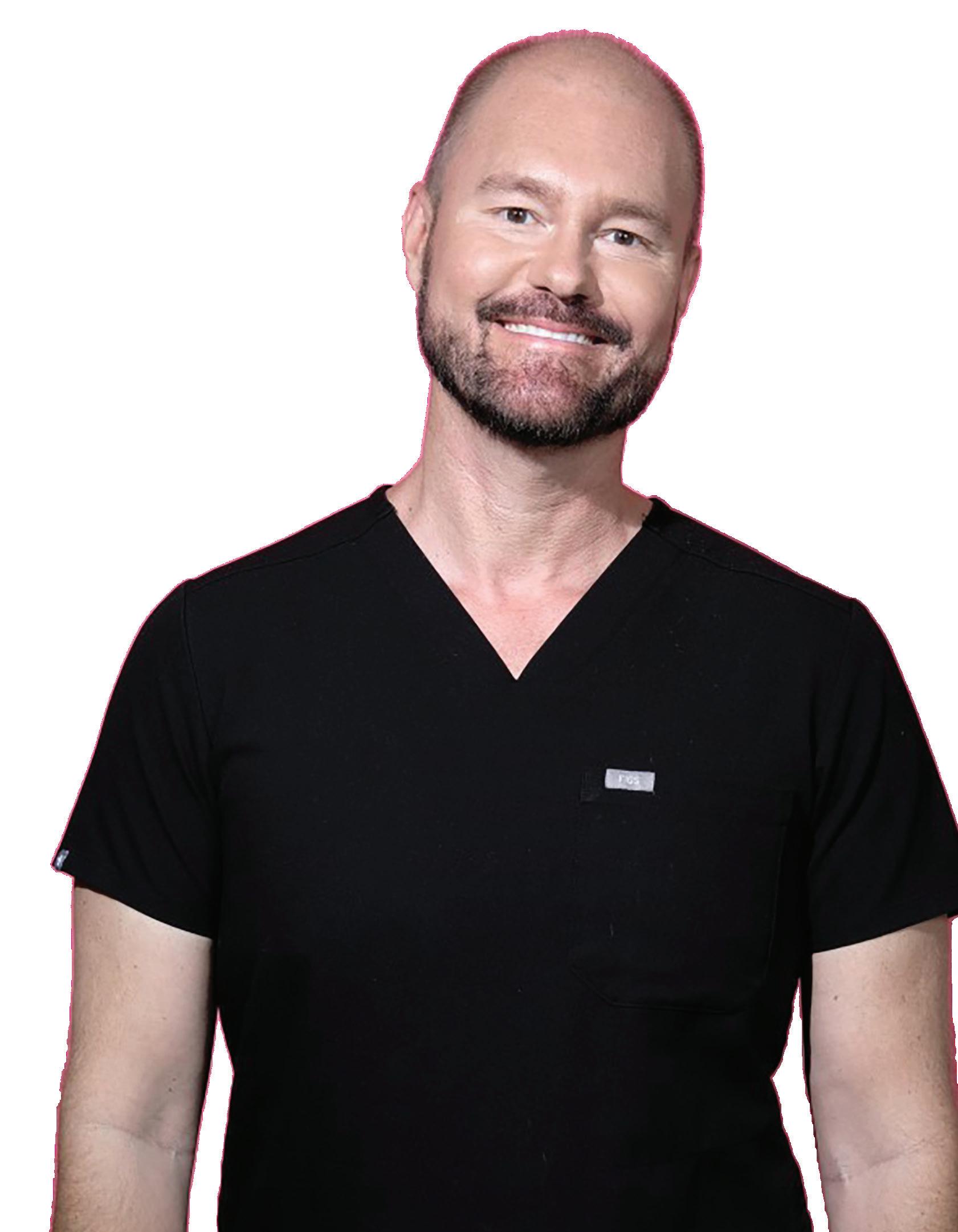
Below, please find pro advice from the man fast becoming the gay Dr. Ruth.
Tops
• Tease your bottom prior to entering him. There are millions of nerve endings down there. Your fingers, tongue, and tip work well.
• Let — and help — your bottom open up. Use the Butt Clock technique (learn it on Insta @doctorcarlton), and take it slowly at first, to avoid injury. No ramming. Ever.
• Make sure your bottom finishes. And don’t pull out too fast. That could hurt him.
• To avoid a urinary tract infection, pee when you’re done.
Bottoms
• To control your top’s initial speed and depth of entry, start on top.
• Don’t forget to breathe.
• Push out a little as your top slides in.
• Take your time, so you don’t tear.
• Use lots of good lube (silicone is best), applying and reapplying generously.
• Communicate by using eye contact for visual cues, and by talking and listening for verbal cues.
• Change positions frequently to keep things exciting. Find the best option for both of you.
If you’re new to bottoming, Dr. Carlton suggests using toys to learn how to open up and take it. “I recommend one that has a small tip and gets progressively wider, so you can go at your own pace,” he says. “There’s so much work — and an insane amount of pressure — that goes into preparing to bottom. A lot of guys are terrified they aren’t clean enough. But if you’re on a good, highfiber diet, you should be able to flush out completely in about 15 to 20 minutes.
Some guys tell me they’re in there for four or five hours. That’s overdoing it.”
Not that tops are completely stress-free. “There’s a lot of performance anxiety about getting and maintaining a strong erection,” says Dr. Carlton, adding that, thankfully, good meds are available for those challenged in that respect. “A lot of tops worry their penis isn’t big or thick enough. But a bottom’s G-spot is only a couple of inches in. You don’t have to be huge to hit it right.”
One last bit of wisdom: Inspect the goods before you play. “If something doesn’t look or smell right,” says Dr. Carlton, “just politely step away with, ‘I don’t think this is gonna work out today. Let’s try another time.’”
For more expert counsel on countless topics, follow Dr. Carlton on Instagram and TikTok here: @doctorcarlton.
In 1990, when 15-year-old Andy Clements saw his first nudes in a gay male magazine — was it Honcho, Inches, Mandate? — he not only knew he liked what he saw, he realized he wanted to be in those pages, too. It would, however, take 20 years for this handsome and charming Knoxville, Tennessee native to turn his dream into reality thanks to his alter ego, who performs under the nom de porn Drew Sebastian. But more on that in a bit.
Clements, who’d figured out his queerness as a young boy, showed an early penchant for musical theatre. He therefore took private singing lessons as a teen before going on to study classical voice in college. Performing in Vegas and at theme parks post-graduation led him to Houston, where — bored with survival office jobs — he began escorting and go-go dancing. When he first visited San Francisco’s Folsom Street Fair, at age 35 in 2010, Clements contacted a few studios to explore having sex on camera.
By then, he was enrolled in the prestigious culinary and hospitality school Le Cordon Bleu. After that graduation, he reinvented himself as a celebrity chef, creating healthy cuisine for the likes of Adam Levine, Jordana Brewster, and Charlie Puth, among many others who must remain nameless due to non-disclosure agreements.

All the while, Clements continued to dabble in sex work off and on until his adult film career inexplicably exploded in 2015, when he was 40. The late bloomer has since made up for lost time, winning twin 2022 Grabby Awards as both Performer of the Year and Hottest Daddy, and also co-starring in the winner of the Best Feature category at the 2023 Gay Video Network Awards (GayVNs).
If there’s a theme to the life led today by Clements — who moved to Palm Springs from Los Angeles at the start of the COVID-19 pandemic, finding sobriety in the desert in the process — it’s health. He now not only works as a personal fitness trainer at local gym Training & Discipline on East Tahquitz Canyon Way, but is authoring a cookbook for those who wish to eat well, and is even writing a cabaret act he’ll perform some time in the near future.
This commitment to wellness extends to keeping his co-stars, as well as his boyfriend in Italy, safe from sexually transmitted infections (STIs) by testing fully and often. “Because I’m so sexually active, I like to test every three months,” he says. “But there are times I feel I need to test more often, so I do.”
Regardless of the frequency, Clements always undergoes what’s known as three-site testing, which involves bloodwork for HIV and syphilis as well as a urine samples, plus throat and rectal swabs, to detect the presence of gonorrhea and chlamydia.
“Three-site testing is important because different bacteria can be in different locations and a single test does not diagnose all areas,” says DAP Health Nurse Practitioner and Clinical Supervisor of Sexual Wellness Trent Broadus. “For example, a urine specimen doesn’t let us know about infection in the throat or rectum, and one could potentially have chlamydia in the former and gonorrhea in the latter. Many people are asymptomatic, so we highly encourage testing all three sites at each visit.”
Broadus further explains that gonorrhea and chlamydia have an incubation period of approximately three days, while syphilis can take longer — 10 to 21 days — to show up on a test.
“That’s why getting a syphilis test as a baseline is so important,” he says.
Clements, who visits various testing facilities depending on where he is around the country or throughout the world, does use DAP Health’s Orange Clinic (where all HIV and STI testing is always free for everyone) when he’s in town. “The whole point is to try to stay on top of it as best you can,” he says, “so you can protect not only yourself, but your partners.”
Follow Clements at his pro Twitter and Instagram handles, @DrewSebastianX.
What is PrEP?
PrEP (pre-exposure prophylaxis) is different medications that can lower your chances of getting HIV and certain other sexually transmitted infections (STIs).
PrEP for HIV Prevention
Administered orally via one pill daily — or by a single injection every two months — PrEP can reduce your risk of contracting HIV. Before starting PrEP, you’ll need to get tested for HIV, STIs, kidney function, and Hepatitis B and C. Please note it takes at least one week on PrEP before you are protected for anal sex, and three weeks for vaginal sex. According to the Centers for Disease Control (CDC), when taken as prescribed, PrEP reduces the risk of HIV infection from sexual activity by more than 99%, and by at least 74% for those who use intravenous drugs.
PrEP for STI Prevention
Most commonly referred to as Doxy PrEP, doxycycline can be used to lower your chances of becoming infected with chlamydia or syphilis. Some studies also show effectiveness in preventing gonorrhea. Dosage is one 100mg tablet taken once daily.
If you’re interested in PrEP, contact PrEP Navigators at DAP Health. You can also talk to any nurse or nurse practitioner during your visit if you want to discuss which PrEP may be right for you. If you don’t have health care insurance, or if you need financial assistance, a PrEP navigator can also explain your options, help you get access, and answer questions about finding a doctor or working with your pharmacy.
All PrEP options require follow-up appointments with clinical staff for STI testing and medication refills every two (injectable PrEP) or three (oral PrEP) months.
What is PEP?
PEP (post-exposure prophylaxis) is different medications — taken ideally within 24 hours (but no later than 72 hours) after condomless sex where bodily fluid may have been exchanged — that can help prevent infection from HIV and certain other STIs in someone who is not on PrEP or Doxy PrEP.
This form of PEP is a combination of three drugs taken once or twice a day for 30 days: tenofovir and emtricitabine (two meds in one tablet) and either raltegravir or dolutegravir.
For prevention of chlamydia, syphilis, and possibly gonorrhea, this form of PEP (also known as Doxy PEP or dPEP) is a onetime dose of two 100mg tablets of doxycycline taken within 72 hours of an exposure.
When condomless sex has occurred, and there has been possible exposure to HIV and/or to an STI, do one of these three things ASAP:
• Contact your health care provider.
• Go to the emergency room or urgent care.
• Contact a DAP Health PrEP navigator at 760.656.8400.
A complete STI screening — including bloodwork, plus throat and rectal swabs — will be completed by a nurse. A clinician will then assess you, and if appropriate, prescribe PEP medication(s). A follow-up visit (for another complete STI screening 30 days after your initial visit, to confirm the absence of HIV and/or STIs) will be scheduled.
All PrEP and PEP visits and lab work done at DAP Health’s sexual wellness clinics in Palm Springs and Indio are always free of charge for all patients.
NAVIGATING NON-MONOGAMY TAKES LOVE, PATIENCE, TRUST, RESPECT, HONESTY, AND — MOST IMPORTANTLY — A SET OF MUTUALLY AGREED UPON RULES
One thing fans love most about Dr. Carlton Thomas is his willingness to answer anonymous questions and give advice through social media. “One of the most frequent ones I get is, ‘My husband is really vanilla and plain and doesn’t have a very big sex drive. I’m a big pig who wants this and that, and I don’t know how to tell him,’” Carlton confides. “It’s important to remember that, when it comes to our relationships in the gay world, we don’t have to follow heteronormative rules of how things go. There doesn’t have to be pure monogamy. You can work that out between the two parties. I think being openminded — and separating sex and love — is important. Also, being willing to compromise. Some people who are tentative about non-monogamy can ease into it by only playing with others together, at least at first. Frequent reassurance and communication are key.”
Certainly, an open relationship isn’t for every couple, but if two committed people want to explore non-monogamy, mutually agreed upon rules that will govern the arrangement are the best place to start.

Because being open requires a strong degree of love, honest communication, trust, and respect, it’s advisable that two people form a strong, monogamous bond before venturing out. And it must be said: Early in a romantic relationship, nonmonogamy usually isn’t an issue. Most people have no desire to have sex with someone other than their primary partner.
But if you’re both ready to test the waters of nonexclusivity in the bedroom, some of the questions you may want to consider when setting the boundaries for sexual activity outside your primary relationship include:
Who?
• Anyone
• Anonymous only
• Only us and a third
• No friends
• No mutual friends
• No repeats
• Regular play buddies OK
• Coupled guys only (no singles)
• Are we HIV-friendly?
What?
• Watching/showing off only
• Mutual JO only
• Oral OK
• Anal OK (Top? Bottom? Either?)
• Kissing OK
• Threesomes
• Condoms only
• Just sex — no dates
• What about overnights?
When?
• Any time
• Only when one of us is out of town
• Only when one of us is at work/not at home
• Only when it doesn’t conflict with together time
• Only when we both agree it’s allowed
• Only when we’re together (in a bathhouse or sex club, in a threesome)
Where?
• Anywhere
• Only in public (rest room, bathhouse, gym steam room, park)
• Only at their place
• Never at their place
• Only at home
• Never at home
• Never in our bed
• Only in our bed
In conclusion, perhaps the important rule is this: If one of you breaks a rule, that person must reveal it. From there, both partners agree to discuss the matter — with neither blame nor anger — so that a deeper understanding of the situation can be reached. If you both feel you need couples counseling, go for it. The bottom line (no pun intended) is this: Your primary relationship (and the love, honest communication, trust, and respect inherent in it) matters most. Don’t lie. Don’t hide. That’s cheating — and cheating is the last thing an open relationship is all about.
You can leave the world better than you found it by supporting the community you want to create. When you leave a gift to DAP Health in your will or trust, or by beneficiary designation, you can provide comprehensive health care to our most vulnerable community members in the Coachella Valley. We believe all people deserve compassionate health care, regardless of their ability to pay.
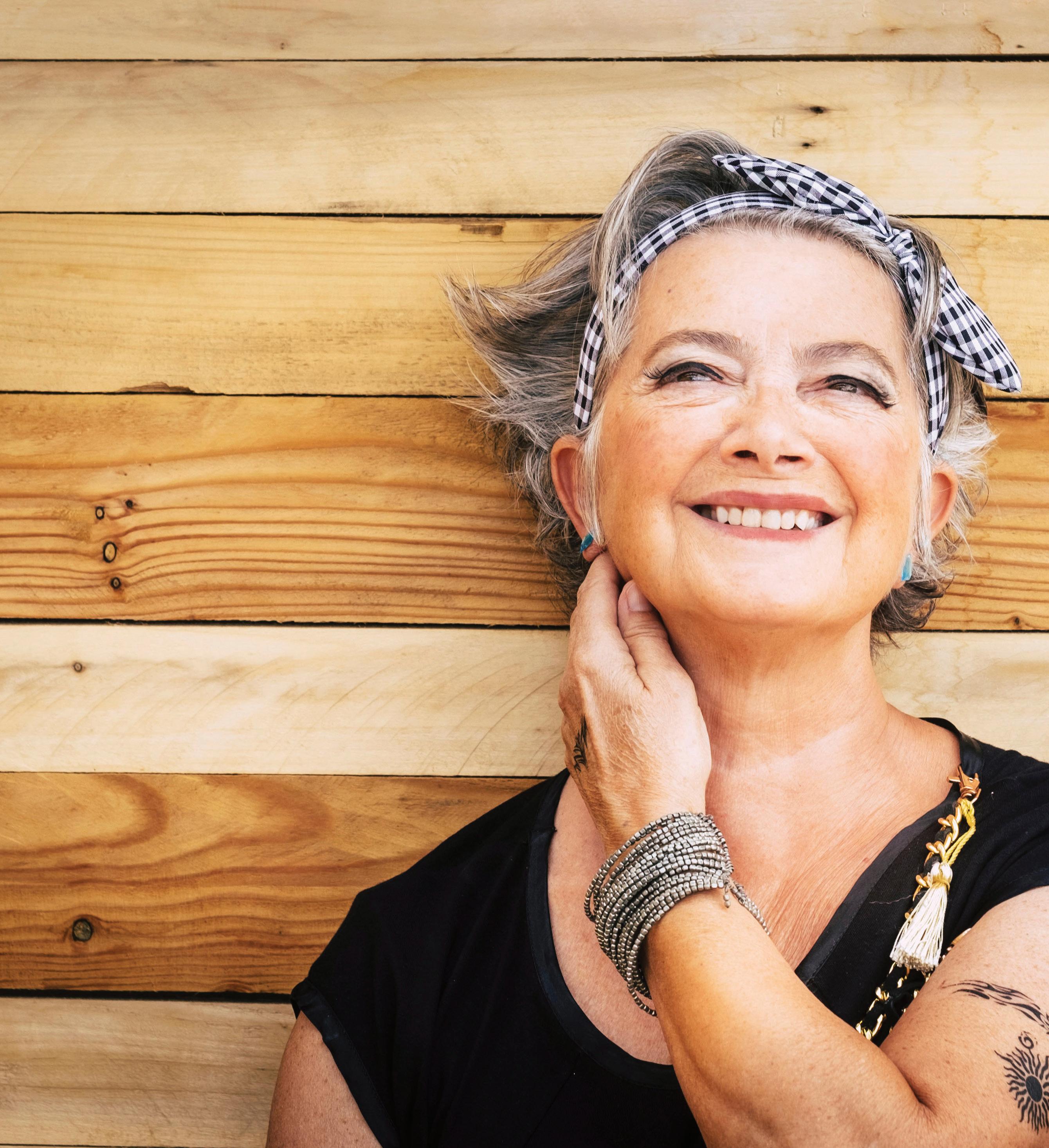
INOCULATION ISN’T JUST ALL ABOUT COVID-19 BOOSTERS AND MPOX JABS. HERE’S A LIST OF MUST-HAVE VACCINATIONS FOR THE SEXUALLY ACTIVE
More than three years into the ongoing COVID-19 pandemic — and as the world celebrates the victory over the mpox resurgence — all of us surely know there exist vaccinations and boosters for those two maladies, both of which are especially contagious when humans find themselves in close quarters. But here’s a reminder that there are a few more inoculations appropriate for anyone with a dating pool bigger than a shot glass.
Influenza
No matter the stated effectiveness of the annual fall flu shot — or whether you believe in its ability to thwart off disease at all — while you’re at it, why not give it a shot (pun entirely intended).
Hepatitis A and B
Hep A is commonly contracted via anal/oral contact, or by ingesting contaminated food or water. Hep B, like HIV, is passed on through blood. Both cause liver disease that can quickly become complicated, leading to liver failure and/or cancer.
Human Papillomavirus
HPV is actually the most common sexually transmitted infection (STI), and can not only cause genital warts, but rectal and cervical cancer, and possibly even cancer of the throat and pharynx. Best administered before one is ever sexually active, its vaccine nonetheless does offer protection even following exposure to the virus.
Meningitis can be a lifethreatening viral, bacterial, or fungal infection of the brain, spinal cord, and cerebrospinal fluid. But thankfully, there’s a vax for that!
The CDC recommends adults 50 years and older get the shingles vaccine to prevent the illness and its complications, which include a seriously painful rash.
“I hope that, having recently been poked in the arm on more occasions than they ever have in their entire life, people have truly come to understand and appreciate the value of vaccines,” says DAP Health Nurse Practitioner and Clinical Supervisor of Sexual Wellness Trent Broadus. “Get them. They work!”
Please note that, while DAP Health does not offer vaccinations in either of its sexual wellness clinics in Palm Springs or Indio, those who receive primary care here may be able to access inoculations through their provider. If you’re not yet a patient of DAP Health, talk to your doctor about how to schedule, and stay up on, these important vaccines.

“I hope that, having recently been poked in the arm on more occasions than they ever have in their entire life, people have truly come to understand and appreciate the value of vaccines.”

As a young person growing up in Indio, Albert Gonzalez didn’t think there were other gay people like him in the Coachella Valley. Much like to the desert itself, the intervening years have brought incredible transformation to Gonzalez’s life. He’s emerged as an essential leader in the region’s LGBTQ+ community.
Along with his partner in business and life, Willie Rhine, Gonzalez co-owns Palm Springs’ Eight4Nine Restaurant & Lounge. A self-taught pastry chef, he now runs the kitchen. Eight4Nine has frequently hosted events for organizations such as DAP Health and the LGBTQ Community Center of the Desert, given in-kind donations to numerous local charities, and even provided meal deliveries to first responders and older adults during the early months of the COVID-19 pandemic.
Gonzalez and Rhine have also given back through philanthropy. They participate in DAP Health’s major donor program Partners for Life, are Angels at AIDS Assistance Program –Food Samaritans, and contribute to the Center as longtime Ocotillo members. Since 2019, Gonzalez has also been on the Center’s board of directors. To top it all off, he’s worked 100 volunteer hours at DAP Health’s Revivals Thrift Store, and been a frequent volunteer at the Palm Springs Animal Shelter.
Gonzalez’s personal philosophy of service is a simple one, described as “the conundrum where you have to give it away in order to keep it.”
Giving back to the communities he’s been a part of includes his community of origin. With Gonzalez’s involvement on its board, the Center has amped up its programing in the East Valley by offering new programs to LGBTQ+ young people.
“He’s just got this incredibly kind, wonderful spirit,” says former Center Executive Director and CEO Rob Wheeler. “If we’re struggling with something, Albert is one of the first people we reach out to.”
For Gonzalez, his current abundance didn’t always seem likely. It meant detaching from his close-knit family of origin, getting sober, and teaching himself how to cook from a discount Betty Crocker cookbook. “Growing up here in the valley, I didn’t have an idea of where to go, what goals to have in life,” he says. “Today my life is very different, it’s beyond my wildest dreams.”
Gonzalez describes his upbringing in Indio in the 1980s and ’90s as “a bubble.” When the 43-year-old was young, his part of the East Valley hadn’t experienced the economic prosperity felt elsewhere. To Gonzalez, it was isolated and remote.
“I grew up very conservative,” he says. “Going to church basically alienated everybody around us.”
Gonzalez is the second eldest of four children of working-class parents — a landscaper and an office administrator — whose own parents immigrated to the city of Thermal from Mexico. Gonzalez’s folks broke off from the rest of the extended family when they left the Catholic church and became members of a born-again, Apostolic church.
From an early age, Gonzalez knew he was gay. As an active member in his conservative church, it tormented him even as he served as youth president and choir director. During pastors’ sermons declaring gay acts as sin, Gonzalez prayed that nobody would notice he was different. At school, some did notice, and he fended off bullying from a young age. “There’s always that sense of loneliness,” he says. “And then, given my background, that I grew up with the church, that only exacerbated it.”
It wasn’t until he was 20 that Gonzalez interacted with out gay people. Working as an office assistant at the Riverside County Department of Mental Health, he met his friend and future mentor Damon Jacobs, a psychotherapist and early PrEP proponent who has worked with DAP Health. When Jacobs invited him to a birthday party in Palm Springs, Gonzalez’s sheltered existence cracked open.
“I felt at home,” Gonzalez says. “I felt that these are my people… Yet I never knew about it, just living 30 minutes away.”
With Jacobs’ help, Gonzalez moved out of his parents’ home and relocated to Palm Springs. To his surprise, his parents accepted his sexuality and choice to leave Indio, but that didn’t mean being out and independent came easy. “We are raised with that fear of sex,” he says. “We don’t get to experience it in a healthy way.”
 Words by Daniel Hirsch • Photos by John Paschal
Words by Daniel Hirsch • Photos by John Paschal
The words that come to mind when I think of Albert: kind, passionate, stubborn, lovable.
Drug use, alcohol abuse, and more than a few unhealthy romantic and sexual relationships consumed Gonzalez’s early 20s. At age 25, he started attending Alcoholics Anonymous meetings and worked to get sober. (Gonzalez will
celebrate 17 years of sobriety in October 2023.)
Around this time, a chance encounter with Rhine forever altered his path. Gonzalez isn’t shy about sharing how
and where they met: They locked eyes outside of a Circle K and went home together soon thereafter. This casual encounter blossomed into a romantic relationship that ultimately transformed into a committed life partnership. To mark their commitment, Gonzalez and Rhine bought each other Cartier bracelets; Gonzalez jokes that if he ever writes a memoir, it would be titled “From Circle K to Cartier.”
“The words that come to mind when I think of Albert: kind, passionate, stubborn, lovable,” says Rhine, adding: “Did I say stubborn?”
Rhine saw that stubbornness in action in the early days of their relationship. At the time, he was general manager of Lulu California Bistro. When Gonzalez, who was still working at the Department of Mental Health, expressed interest in restaurant work, Rhine hired him as maître d’. Working in restaurants ignited something in Gonzalez that came to full fruition when the couple went shopping at a gift shop one Sunday afternoon. That day, Gonzalez purchased the aforementioned Betty Crocker cookbook.
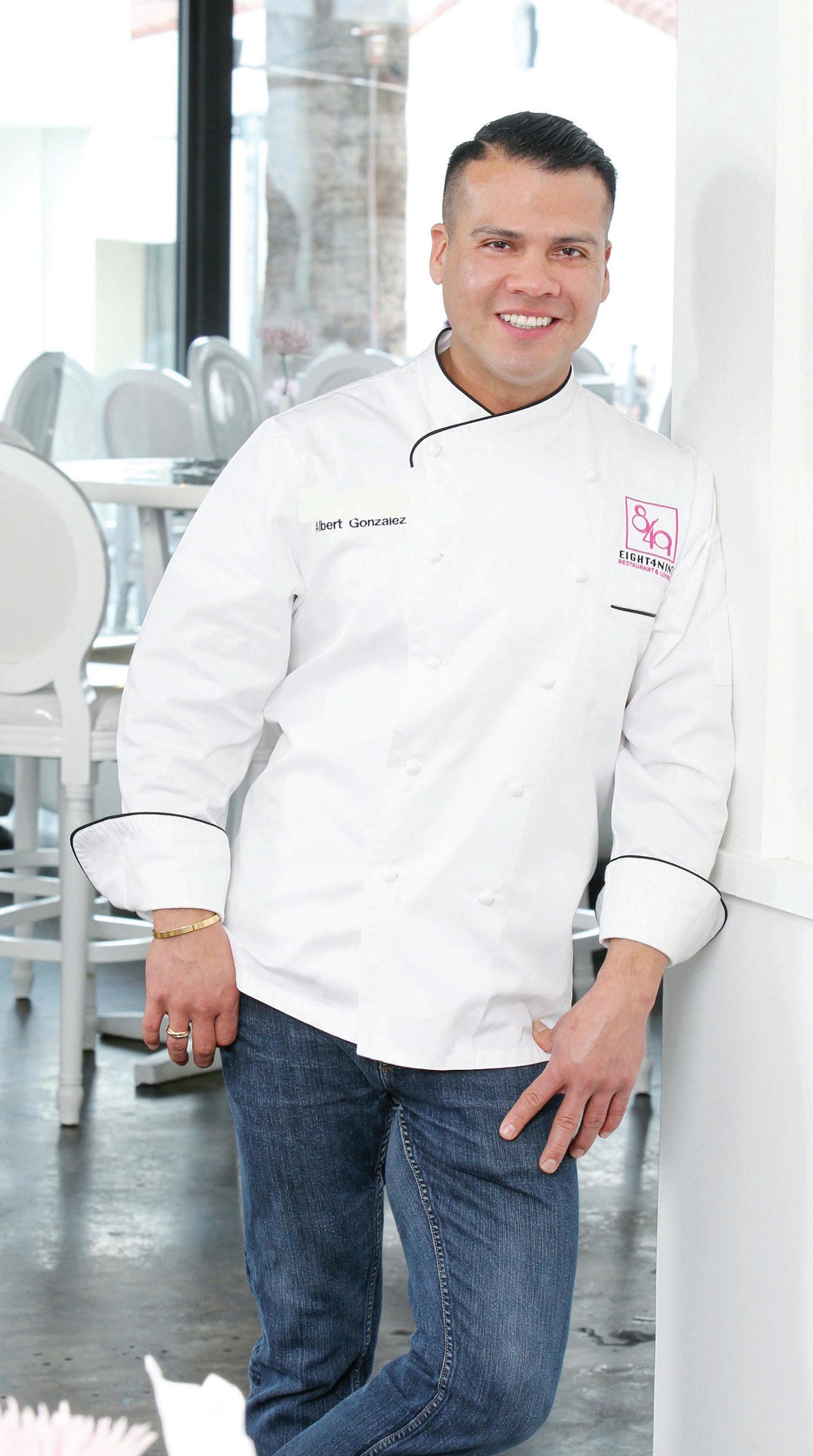
Seeing Gonzalez pick up the cookbook, Rhine was initially dismissive. “My response was, ‘Why are you buying that? It’s a waste of money. You don’t bake. You’ll never use it,’” he recalls. But Gonzalez, whose only gastronomic experience was watching cooking shows on TV, insisted on buying it. From that first cookbook and more to come — plus a few classes at the Culinary Institute of America — Gonzalez taught himself to bake. Occasionally sharing cakes with friends turned into a full-fledged passion. His confections soon grew more and more refined. By the time Rhine opened Eight4Nine in 2015, Gonzalez had become the ideal pastry chef.
When the LGBTQ Community Center of the Desert partnered with the nonprofit Alianza to open a youth center in the East Coachella Valley, both organizations knew their own leadership needed to reflect the largely Latino and immigrant communities they hoped to serve. As an emerging leader in the LGBTQ+ community — not to mention an Indio native — Gonzalez was an obvious choice to join the board.
“Albert is able to pull from his own experience growing up as a young person in Indio,” says Wheeler. “He helped us think about the right questions
we should be asking when we were thinking about need, about what issues young people might be facing in the East Valley.”
Opened in 2016, the Center Eastern Coachella Valley is a youth-driven, LGBTQ+-affirming space situated in downtown Coachella. It hosts support groups, workshops, and social events as well as offers programing to local high schools that addresses youth mental health and uplifts queer people. It’s the kind of place that didn’t exist for Gonzalez when he was growing up in the area. But also, by being involved in its operation and showing up for its programming, Gonzalez has become the kind of person he never knew existed when he was young.

DAP Health Director of Brand Marketing and longtime friend Steven Henke describes Gonzalez as a “north star” for young people in the valley. “Anyone can
look at the life he’s created and learn from it,” he says.

For Gonzalez, returning to his old home is both inspiring and daunting. “When I go back to Indio, there’s still that fear … the homophobia is still there,” he says. “Hopefully, through the Center, we can educate individuals that we are here … and we’re not evil, we’re not bad!”
Recently, Gonzalez had such a chance to educate. He joined Wheeler in the car parade of the 2021 East Coachella Valley Pride Festival — only the fifth year of its existence. Driving through the streets of Coachella, seeing all the rainbow flags and people cheering in support, it was clear his old home had changed — and so had he.
When it comes to gay men with experiences of coming out, Rob Thomas and Ron King had theirs at opposite ends of the age spectrum.
Six months ago, Thomas started receiving dental services at DAP Health, which qualified him to engage in Wellness Center activities, too. Thomas notes that King found The
“You pause and calculate.
What do I disclose?
King claims.
Thomas and King are also an interracial couple. And Thomas is on Social Security disability, having gone blind in 2005 from diabetic retinopathy, the leading cause of blindness in working-age adults. King is a retired special education teacher, a retired massage therapist, and also an interfaith minister who still officiates at weddings. He says he’s been a client of DAP Health since 2014 and a participant in the Wellness Center’s activities for years.
Why is this person asking me?
Is it safe?
Do I feel comfortable disclosing I’m gay?”






The Coming Out Experience at DAP Health is all about sharing stories and making connections
for some people like friends or family members, but not for others like colleagues or neighbors.
Rossetti says this can lead to the “pause effect,” as one stops and considers how best to respond when someone asks if one is dating or in a relationship. “You pause and calculate. What do I disclose? Why is this person asking me? Is it safe? Do I feel comfortable disclosing I’m gay?”







According to Rossetti, this doesn’t mean you have to lead with, “Oh, hey, I’m gay.” But Rossetti says this
holistically, looking at all parts, the mind and the body.” As for The Coming Out Experience, it’s like “informal group counseling, where you get together with people who have common experiences and learn from each other.”
The Coming Out Experience meets via Zoom on Thursdays from 10:00 to 11:00 a.m. Those interested are encouraged to call Steve Rossetti at 760.322.6378, or to email him at SRossetti@DAPHealth.org.
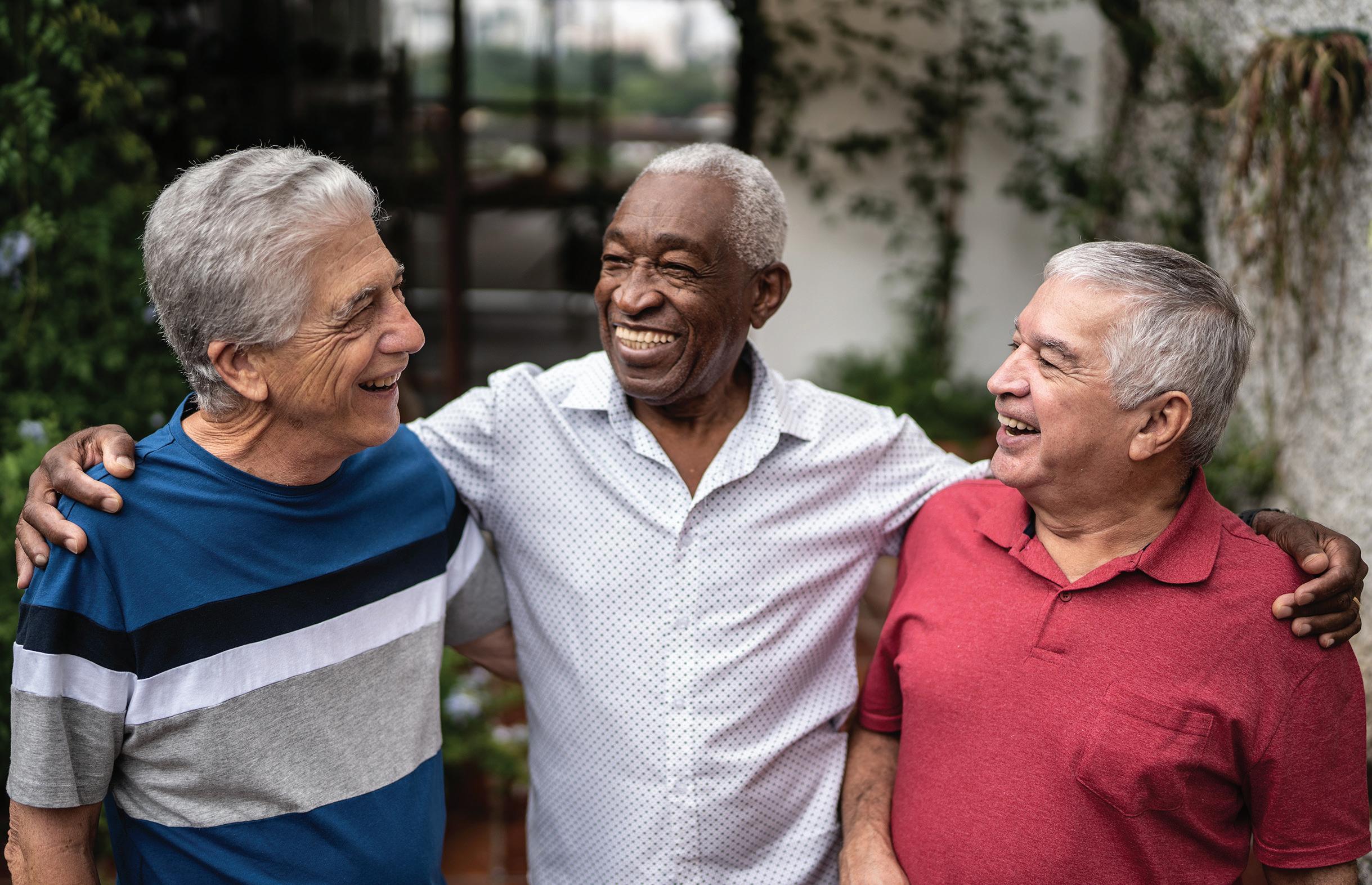
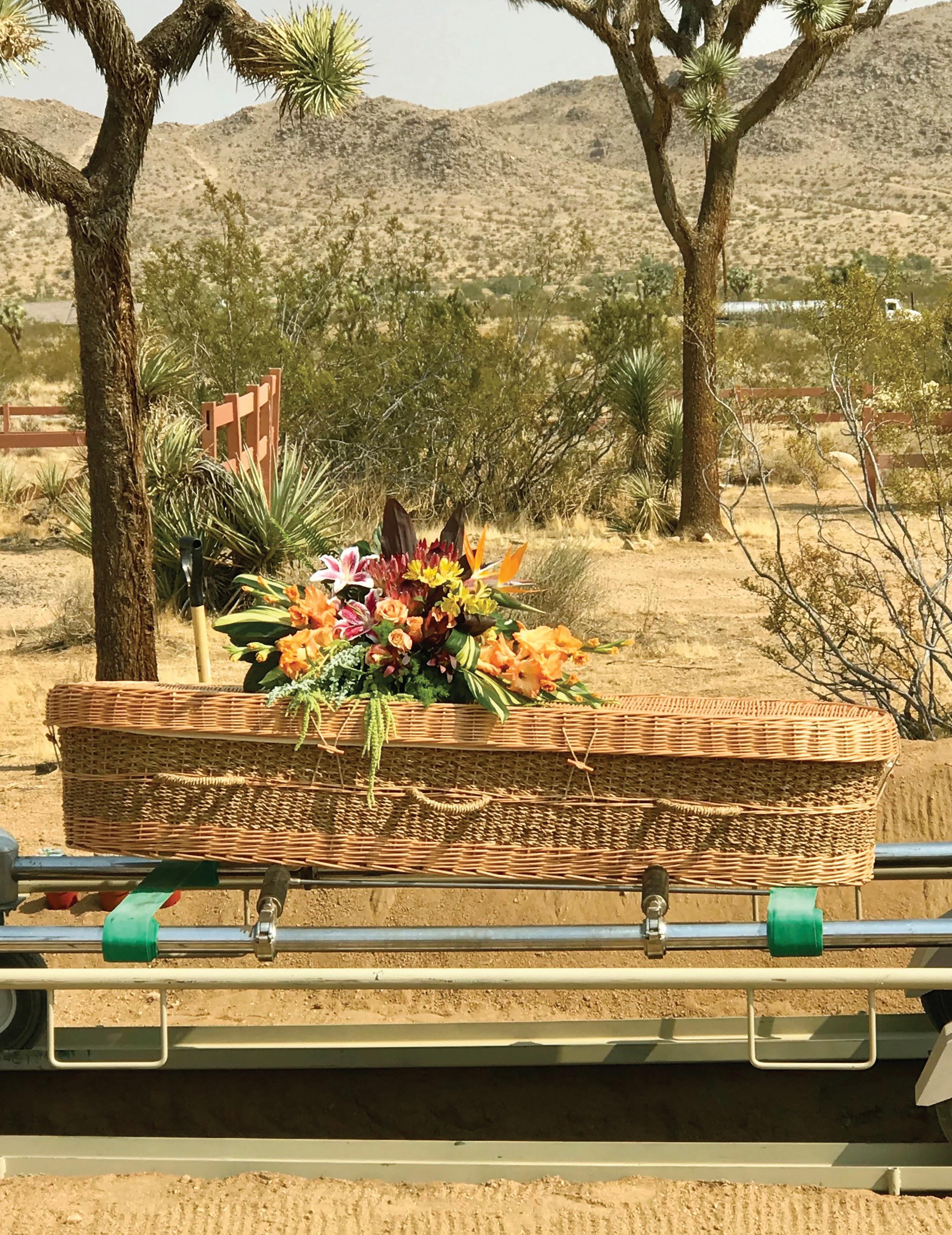
With an ever-growing number of people seriously concerned about the current state of the environment, many readily embrace the notion of “going green” in life. They recycle, conserve water, compost, and rideshare, use public transportation, or drive hybrid or electric vehicles. But how many know it’s possible to go green in death?

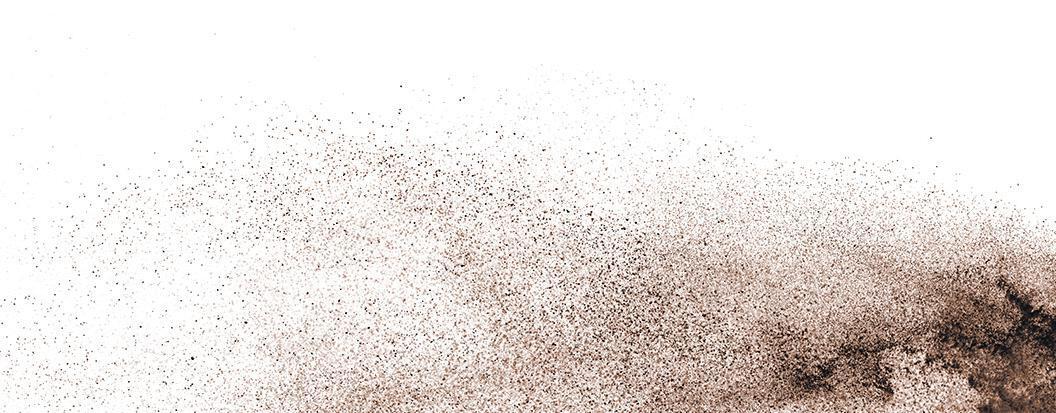
On its website, the Green Burial Council (GBC) — a organization based in Placerville, California that focuses on alternative burial advocacy and education — defines the term as interment that cares for the dead “with minimal environmental impact that aids in the conservation of natural resources, reduction of carbon emissions, protection of worker health, and the restoration and/or preservation of habitat.”
clients. Wiefels owns Joshua Tree Memorial Park in the high desert, which facilitates 100% natural burials. “Which basically means that when you die, there is no embalming, there is no traditional casket, there is no vault,” she says. “Your body is either wrapped in a biodegradable shroud, or a biodegradable casket, and placed directly into the ground. And we hand dig the graves, so it is fully green.”
Green burial … has the added bonus of being what many cultures have done with their dead for tens of thousands of years.
“Green burial isn’t necessarily the top option for everybody, and that’s OK,” says GBC Board President Caitlyn Hauke, adding that misconceptions are often what keep people from choosing that path. “Are there going to be grave disturbances from animals? Is there going to be soil contamination from putting bodies [in the ground] without a casket? These are misunderstandings that we need to educate folks on.”
Indeed. Especially since conventional burials using caskets (made of wood or metal) enclosed inside concrete vaults in a cemetery still account for 35–40% of deaths in the United States today. In the “Disposition Statistics” portion of its website, GBC quotes Mary Woodsen of Cornell University and Greensprings Natural Preserve in Newfield, New York as saying that U.S. burials use approximately “4.3 million gallons embalming fluid (827,060 gallons of which is formaldehyde, methanol, and benzene), 20 million board feet of hardwoods (including rainforest woods), 1.6 million tons of concrete, 17,000 tons of copper and bronze, 64,500 tons of steel, [with] caskets and vaults leaching iron, copper, lead, zinc, and cobalt.”
When one factors in that this age-old custom forces funeral workers to wear personal protection equipment (PPE) to help shield them from toxic and cancer-causing chemicals, it’s obvious there’s nothing ecologically sound about this preference.
Palm Springs’ Wiefels Cremation and Funeral Services Preplanning Director Kasey Scott offers green burial, along with many other more traditional services, to a wide array of
“Green burial … has the added bonus of being what many cultures have done with their dead for tens of thousands of years,” maintains Caitlin Doughty, a mortician, author, blogger, and influencer whose YouTube web series, “Ask a Mortician,” has almost two million subscribers. The founder of The Order of the Good Death, Doughty is one of the most vocal proponents of reforms to the Western funeral industry. Her trio of books — 2014’s “Smoke Gets in Your Eyes & Other Lessons from the Crematory,” 2017’s “From Here to Eternity: Traveling the World to Find the Good Death,” and 2019’s “Will My Cat Eat My Eyeballs? Big Questions from Tiny Mortals About Death” — are all New York Times best-sellers.
The interest in green burials has grown exponentially in the past 10 years, with more and more cemeteries accommodating the practice opening all the time. According to the website of the nonprofit New Hampshire Funeral Resources, Education & Advocacy, there are currently 386 certified green burial cemeteries in the U.S. and Canada.
Also encouraging: The 2022 Consumer Awareness and Preferences Report of The National Funeral Directors Association (NFDA) states that “60.5% would be interested in exploring green funeral options because of their potential environmental benefits, cost savings, or for some other reason, up from 55.7% in 2021.”
Scott reports that locally, more and more people are investigating this alternative, and that she firmly believes awareness will continue to grow as curiosity about it mounts.
For now, traditional cremation is by far still the most popular way of caring for human remains in the U.S. The NFDA claims the 2021 American [fire] cremation rate was 60% (and more than 70% in Canada), and is projected to reach 80% by 2035. Although environmentalists concede cremation is “better” than traditional burials, the process for each body nonetheless uses
Good news for your digital diet
some 30 gallons of fossil fuel per cremation, releasing 140 pounds of carbon dioxide into the atmosphere, and discharging dangerous amounts of mercury into the air if the deceased had mercury tooth fillings.

The greener alkaline hydrolysis (also known as aquamation, or water cremation) has been used since 1888, when it was developed in England to process animal carcasses. It’s been slowly gaining traction as replacement for casket/vault burial or traditional fire cremation. Available now in more than 50% of U.S. states — including all those on the West Coast, and locally in the Palm Springs area — the practice converts soft tissue into salt, amino acids, and sugars, and produces neither carbon emissions nor fossil fuels. The process destroys all DNA and RNA, and at its conclusion, the family receives remains similar to traditional cremation.
After studying the process of human decomposition, Katrina Spade founded Seattle’s Recompose, a company that composts human beings, a process officially known as natural organic reduction. “Microbes break the body and the plant materials down in about a month, cocooned in woodchips and straw,” Spade explains on the “Let’s Visit the Human Compositing Facility” episode of Doughty’s “Ask a Mortician.”
Adds Doughty: “As the body decays into soil, it changes on a molecular level, and pathogens, pharmaceuticals, and chemotherapy drugs are all neutralized in the process, reduced to well below what the EPA considers safe levels. After the 30 days, about one cubic yard of the nutrient-dense soil comes forth from the vessel. The soil is then allowed to cure before it can be used in gardens, forests, or conservation land.”
Natural organic reduction is now available in Washington, Oregon, California, Colorado, and Vermont, with other states soon to come.
Matt O’Neill and Perri Peltz, director-producers of the popular and groundbreaking (pun unintended but unavoidable) HBO documentary “Alternate Endings: Six New Ways to Die in America,” offer myriad other creative ways of dealing with death, some greener than others. They include adding ashes to small concrete “sculptures” that help form artificial aquatic reefs, shooting cremains into space for those who always
dreamed of eternity among the stars, and setting a body atop a funeral pyre to be ceremonially incinerated in a celebration of life before family and friends.
Another way to lessen the burden of death on the earth is organ and/or body donation. DAP Health Manager of Home Care Supportive Services Becky Sandlin, who oversees nurses and social workers who visit patients and clients in their homes, says it’s not uncommon for the topic to come up with those in end-of-life hospice care. “It’s a heartwarming, selfless act to [donate one’s body to science] to help clinicians and patients alike.”
Bimonthly magazine MIT Technology Review estimates that, “In the U.S., about 20,000 people or their families donate their bodies to scientific research and education each year. They do it because they want to make their deaths meaningful, or because they’re disenchanted with the traditional death industry.” Unused tissue and remains are cremated and returned to the family, along with information on how the body was purposed to further medical science.
Since the interest in going green in death shows no sign of slowing down, it’s promising that federal, state, and municipal laws that have historically prevented ecological burial options in the U.S. are continuously being challenged and changed — some after years of effort. As more and more Americans feel the need to leave a smaller footprint on this earth after they die, green burials will surely prove to be the new interment of choice.
As far as Scott sees it, the only way for one’s body to be disposed of in precisely the way one wishes is to look ahead. “I understand that people don’t want to talk about dying, or to plan for anything of that nature,” she says. “My job is to educate them as to why pre-planning is important. Then, if they want to move forward, it’s my honor to take care of them.”
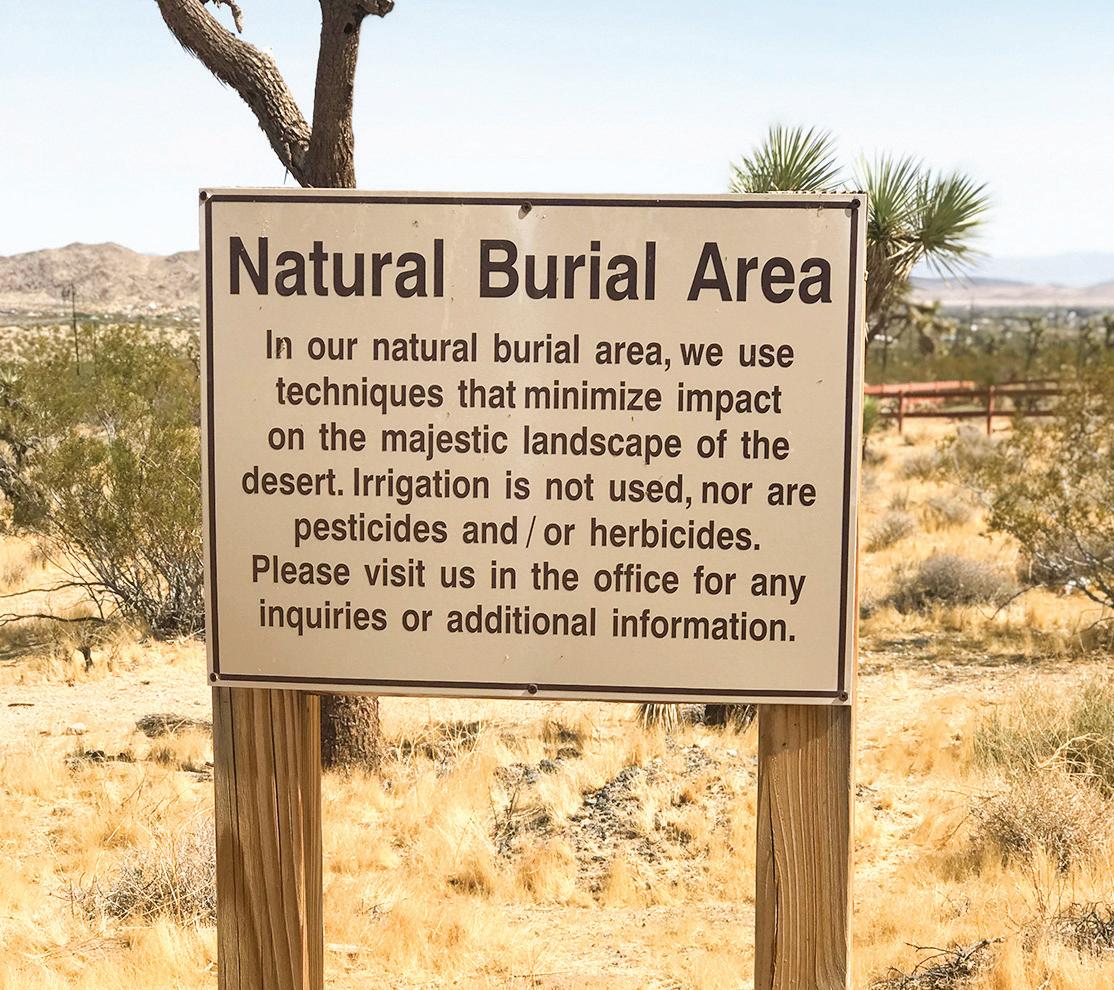
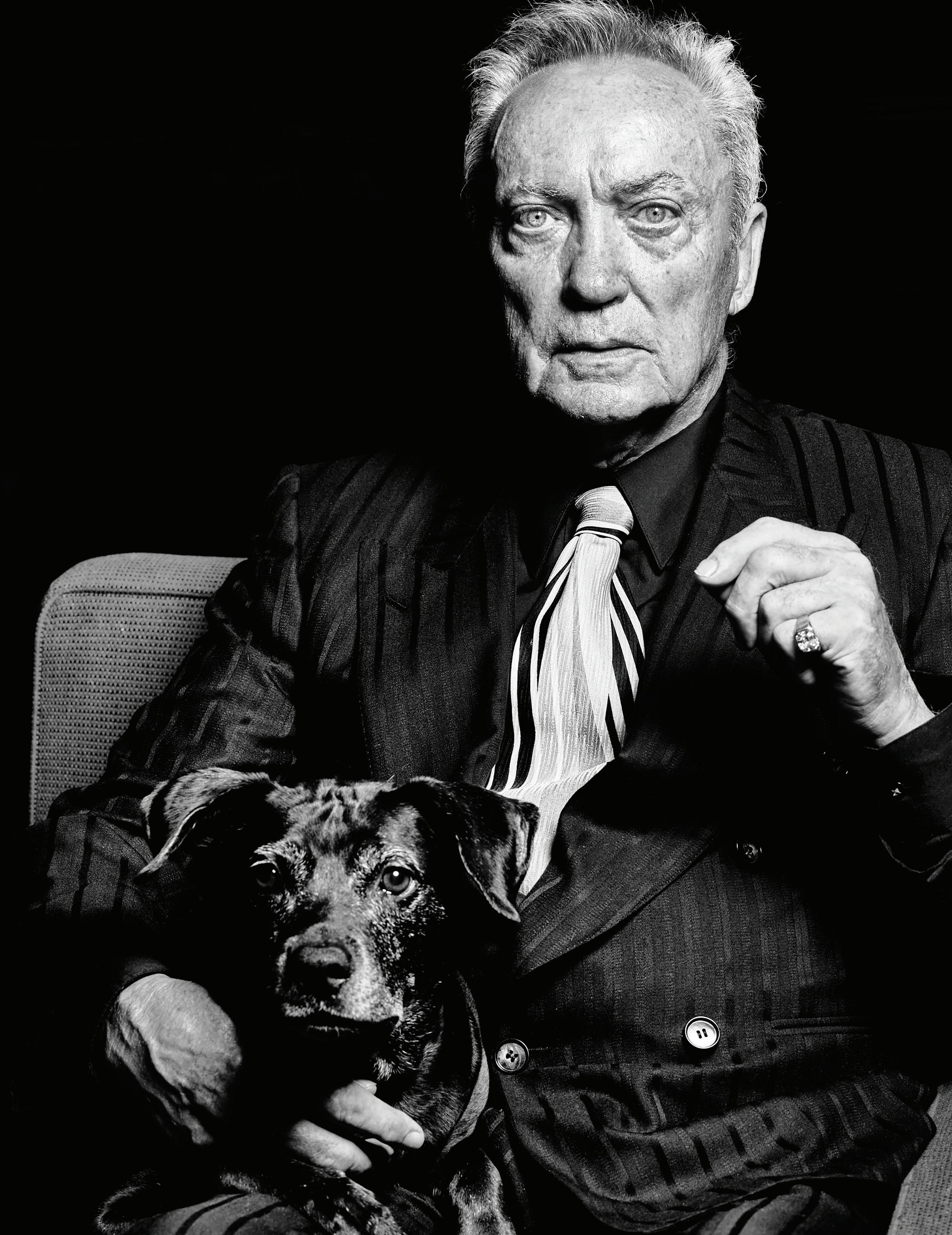
Udo Kier has had a monster career in more ways than one. His acting credits span six decades working with venerated and provocative filmmakers like Andy Warhol and Lars Von Trier. You might recall him in Gus Van Sant’s “My Own Private Idaho” as Hans, the flamboyant lamp dancer, in a threesome with River Phoenix and Keanu Reeves. More recently, he’s got a six-episode arc on the Al Pacino led “Hunters” as Adolph Hitler, and a new movie, “My Neighbor, Adolph.”
“I’ve played Adolph Hitler five times,” Kier says wryly. “My [inner] direction was always comedy. I think about Charlie Chaplin in ‘The Dictator’ when he kicks the world.”
Kier is used to playing monsters. In fact, he’s a cult film monster staple. He played the doctor in Andy Warhol’s “Flesh for Frankenstein,” and the lead in “Blood for Dracula,” from frequent Warhol collaborator Paul Morrissey. He’s also portrayed Jack the Ripper and a slew of other unsavory characters.
When he’s not filming, there’s a fairly good chance you’ll run into Kier at one of the four Coachella Valley Revivals thrift stores. Unlike branded chain retailers, Revivals offers something entirely different at every outpost, whether it’s Palm Springs, Cathedral City, Palm Desert, or Indio.
It’s not clothes Kier is seeking — although he does have a thing for vintage ties. No, the man is into art. It doesn’t have to be a famous artist, but it must speak to him. He has been spoken to a lot over the years. Hence his four shipping containers full of thrifted treasures.
When asked why he thrifts, Kier’s answer is simple: “I love it.” But maybe that quartet of receptacles bursting with art and furniture finds have something to do with his past.
On October 14, 1944, Operation Hurricane launched a 24-hour bombing campaign on Cologne, Germany. Explosives pounded the city — including the hospital where Kier’s mom was in labor with him — relentlessly. They survived, but barely. When it was over, Cologne, the city that had been built in 50 A.D., was in ruins. Things were so bad, Cardinal Josef Frings told his people “Thou shalt not steal” was temporarily on hold, encouraging them to take whatever they needed to survive.
At 18, Kier moved to London to learn English. Now recovered from the Blitz — the eight-month, nonstop bombing by the Nazis — London was back to her jolly old self and swinging into the ’60s. Counterculture was so far out it was in.
One day, in a coffee shop, Kier was approached by a man who asked him if he’d like to be in a film. Kier said, “I don’t know how to act.” The director replied, “I don’t care.” One screen test later, he was cast as the gigolo in “Road to Santa Fe,” directed by Michael Sarne of “Myra Breckinridge” fame. Since then, Kier has appeared in more than 220 movies.
His love of art is not limited to paintings and sculptures, but includes glassware, pottery, and architectural furniture, mainly midcentury modern. When Kier purchased his first home in Los Angeles, needing to furnish it, he did it all by thrifting. His first piece was a George Nelson chair, one of Herman Miller’s designers.
On one thrilling thrifting adventure, Kier found a pair of chairs with metal slats for the back. Enter his prized vintage ties. He wove 11 of them into each chair as backing. If he gets bored with those, he swaps them out.
Unlike many thrifters, Kier isn’t in it for the resale value. He also doesn’t go thinking, “I need something for that wall.” No, he indulges strictly for the pleasure of finding something he would like to enjoy for longer than a glance. In fact, if a friend is over at his home (a repurposed 1965 Palm Springs library designed by John Porter Clark and starchitect Albert Frey) and admires one of his treasures, there’s a fairly good chance — if Kier’s done enjoying it — it’s going home with said friend.
In 2021, Kier played the lead in writer-director Todd Stephens’ film “Swan Song.” The movie is based on the real, outrageous, and famously controversial Sandusky, Ohio hairdresser Pat Pitsenbarger. In one scene, a thrift store owner tells Pat how much his life has impacted her own, and gifts him with a lime green leisure suit. Whether Stephens knew of Kier’s thrifting passion and generous nature is unknown. Either way, it’s a very nice little Easter egg for those on the hunt.
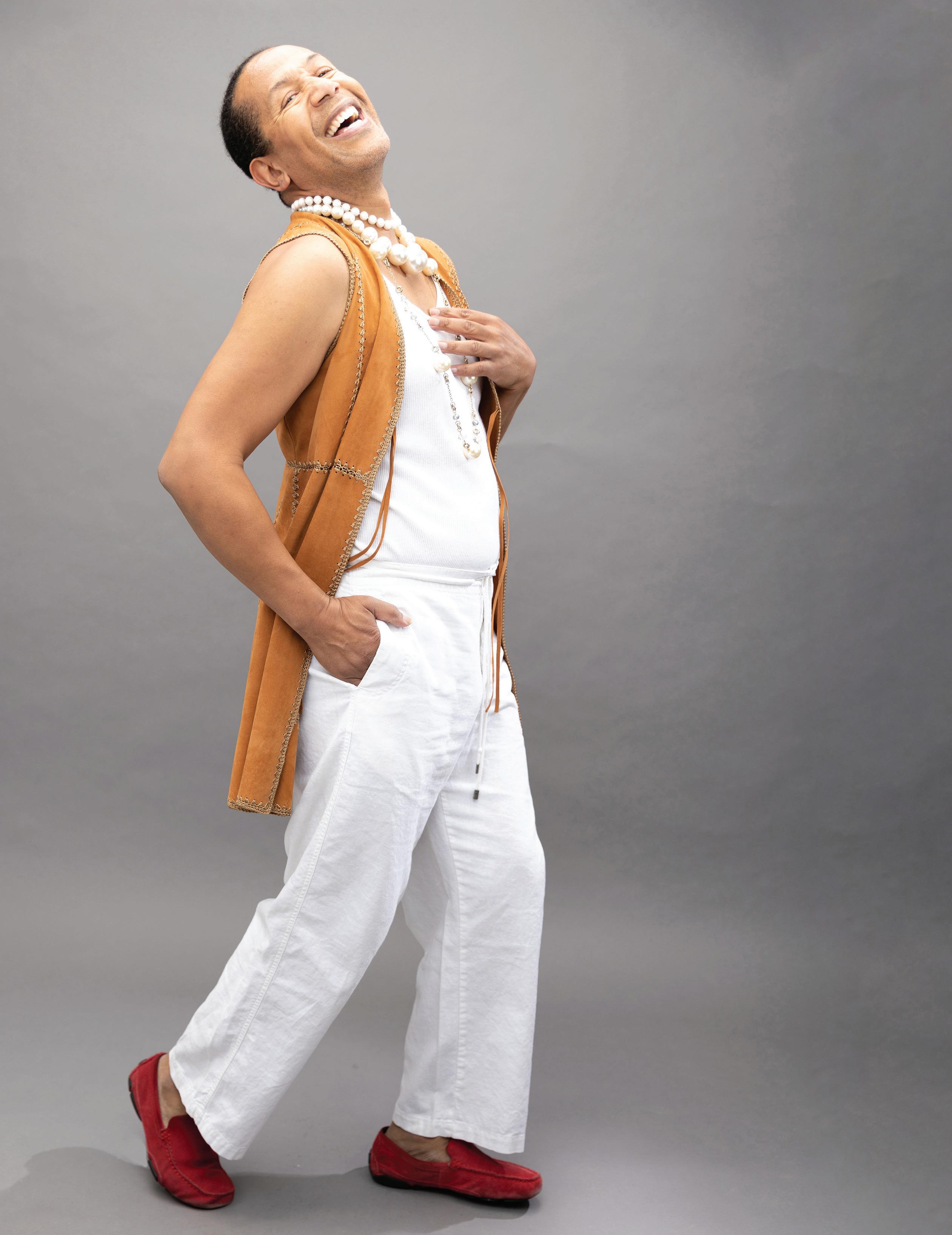


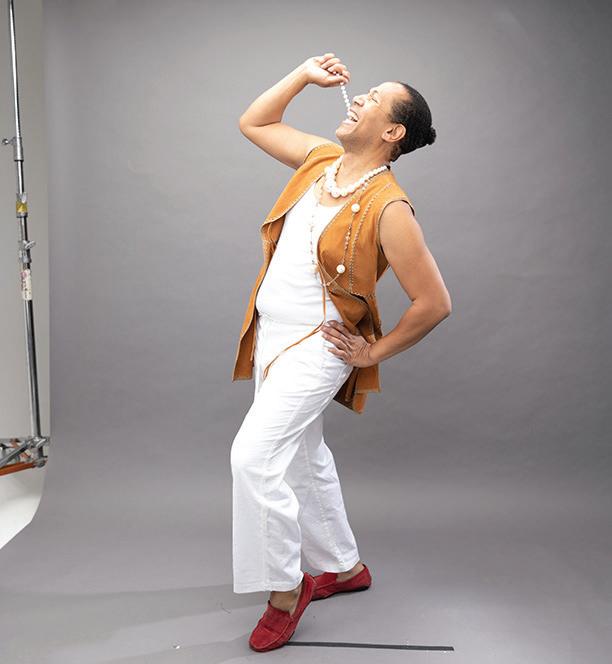


Known to many as Patty Cakes, the gregarious drag queen who creates safe spaces for people to connect with themselves and one another, Patrick Pierre moves through the world with kindness and an aversion to facade. “You’ve got to sit in the truth, right?” he asks rhetorically. “You can’t project something onto someone just so your fake idea can be your fake truth.”
Pierre’s commitment to that path stems from a childhood where he learned how to navigate between joy and trauma at an early age. At 3, his mother left him and his younger brother in Haiti to follow his father to the U.S. For two years, they lived with his grandmother in a house overflowing with young cousins whose parents had made the same choice.
It was in that organized chaos that Patty Cakes first appeared. “She was this energy with a larger-than-life personality that had the power and inner strength, the confidence to look after my younger brother,” he says.
When they boarded a plane for New York two years later, the excitement of seeing the city lights from the air was tempered with the stress of the reunion. “When we arrived, my brother didn’t recognize my mother,” he shares. “And I was only a year-and-a-half when my father left. It felt like abandonment.”
Both his neighborhood and the Catholic school he attended were fully integrated, which showed Pierre how acceptance benefits everyone. “We had the Irish across the street, the Filipinos next door, the Jamaicans on the corner. When I look back, growing up in that community is one of the treasures of my childhood.”
Those formative years provided insights into the similarities shared by humans and the superficiality of most differences. “That’s the American fabric,” he says. “It’s not this whitewashed ‘Let’s make America great again.’ We’re the country of promises. People are at the border because they want to be a part of this American experiment. But we keep them at bay coming from a place of lack. But that was never America’s story.”
Pierre feels a responsibility to share that story with the world, and Patty Cakes is his public way of doing that. “I don’t have a guard up,” he says. “I’m here meeting you with my arms open.”
Patty Cakes first performed at the Boatslip Resort & Beach Club in Provincetown in 1994. “It was the crown
jewel of bars in P’town,” Pierre says. While working as a cocktail waiter, he noticed the bar was empty after Tea Dance, so he approached the owner with the idea of doing live “Dating Game” and “Newlywed Game” shows. Those were successful, which buoyed his confidence and unknowingly laid the foundation for the type of drag queen Patty Cakes is — a host, emcee, and storyteller. “I cannot lip sync!” Pierre laughs. “What I do is take Patrick’s personality and identity and put them through this prism to shine them into the world.”
This is the energy he brought to DAP Health’s Pride Pavilion in November 2022, when he hosted the Speed Friending event. “It was the first time we had tried this idea of breaking isolation by introducing LGBTQ+ folks to each other in a way that was accessible to everyone,” says DAP Health Director of Brand Marketing Steven Henke. “Patty Cakes made everyone feel they were part of Palm Springs Pride.”
Pierre began volunteering with DAP Health in 2013, a year after he relocated to Palm Springs from Atlanta. “I lost three houses in the crash, was thousands of dollars in debt, and had a crappy credit score,” he laughs. “So, I came West.”
Another organization he donates his time to is Brothers of the Desert, a nonprofit that provides a network of support for Black gay men in the area. “There is the compounded stigma of being Black and gay,” he says. “Here there’s an instant connection. A lot of things don’t need to be said because they’re understood. We want to take the love and support we have within us and bring it into Palm Springs and the Coachella Valley.”
Pierre appreciates the relationship the Brothers have with DAP Health, and highlights the importance of reaching more of the Black community with resources, education, and opportunities for camaraderie. “It’s been a wonderful symbiotic relationship,” he says. “DAP Health has helped us get the word out on who the Brothers are, and really supports us.”
For the foreseeable future, Pierre is focused on building a bigger platform for Patty Cakes. “For the past 10 years, I’ve been rebuilding and licking my wounds so I’m looking forward to really stepping into who I know myself to be and letting the world know Patrick and Patty Cakes,” he says. “I’ve had a lot of bumps and scrapes, and now I’m ready to, you know, conquer the world.”
Patty Cakes made everyone feel they were part of Palm Springs Pride
Words by Rory Taylor
In 2021, Desert AIDS Project rebranded itself as DAP Health, a broader name to match a broader mission. “We’ve upgraded our services to include primary care and so much more,” says Director of Development James Lindquist. “You can now get mental health care, food, clothing — all these other services. These changes coincided with COVID-19-related interruptions in other fundraising efforts, so a novel approach was needed to connect partners to the expanded mission.”
In June of 2021, the IMPACT Hour — a facility tour for prospective donors that features behind-the-scenes spaces alongside testimonials — was introduced. The visit is intended to inform and to forge connections, rather than to ask for donations.
Entering the Annette Bloch CARE Building, DAP Health’s diversity of care immediately becomes visible in the several clinics within the structure, each named for a color corresponding to chakras: yellow for the solar plexus, green for the heart, blue for the throat, purple for the mind, and orange for the sacral region. Lindquist says this was done to promote privacy and dignity for patients and clients, and to avoid creating shame and stigma.
“You can go to any primary care physician for your services at any of our clinics,” Lindquist continues. “If you go to the reception desk, you say, ‘I have an appointment in the Green Clinic,’ and they will direct you there. They’re not gonna know you’re here because of ‘X.’”
The tour consists of three primary stops, or “buckets,” focusing on ending epidemics, health equity, and mental health and addiction services. Each bucket features a storyteller — an employee, patient, or client — who helps demystify more of the organization’s operations

and reach, following a “myth, fact, gap, need” framework.
“With ending epidemics, we talk about a myth where people believe they’re not susceptible to infectious disease,” says Lindquist. “The fact of the matter is that everybody can get infected by something. COVID, HIV, mpox. Plus, in the Coachella Valley, 15% of people between the ages of 16 and 94 don’t have insurance, compared to the state average of 10%.”
One IMPACT Hour storyteller is LaWanda Manigo, a patient and client at DAP Health who challenges stereotypes about what is broadly perceived as queer health issues. “DAP Health is not just for what some people would typically believe would be [gay] white males,” says Manigo. “I’m letting everybody know there’s other options.”
Meeting guests in the Blue Clinic, Manigo shares how living with HIV as a straight, Black woman impacts quality of life, and how a little education goes a long way. “They have educated me about my diseases, about my health, and have just made me, overall, a better person and a more informed patient, so that I can be more proactive and take a firmer stand in my own health care,” she says. “And that’s a benefit that’s gonna last me the rest of my life.”
That education comes not only in patientpractitioner relationships, but also through learning seminars with pharmaceutical representatives, group wellness programs, and social groups covering everything from

cutting-edge HIV treatment and diabetes prevention to knitting and dog walking.
At the core of the clinic cluster is the bullpen — the first tour stop, and one that exemplifies the broader mission DAP Health has taken on. “All the providers you have at DAP Health get together in the morning before your visit to discuss your case in what they call the bullpen,” says Manigo. “Everybody is touching base, so they get an overall view of what you’re dealing with as a complete person.” Lindquist echoes the great value found in holistic care. “I think a lot of times in our health care, you just get parts of people, you get fractions,” he says. “If you’re getting your primary care at one facility, but then you’re getting your dental somewhere else and you’re taking care of your sexual wellness somewhere else, and you’re getting your therapist somewhere else
— that’s four places I’ve just named! And how many of those typically will be talking to each other?”
The IMPACT Hour tours normally happen every second Wednesday from 5:30 to 6:30 p.m. Invitations are made by staff and current donors.
For more information, please contact Director of Development James Lindquist at JLindquist@DAPHealth.org or at 760.656.8413.
The visit is intended to inform and to forge connections, rather than to ask for donations.Photo by David A Lee
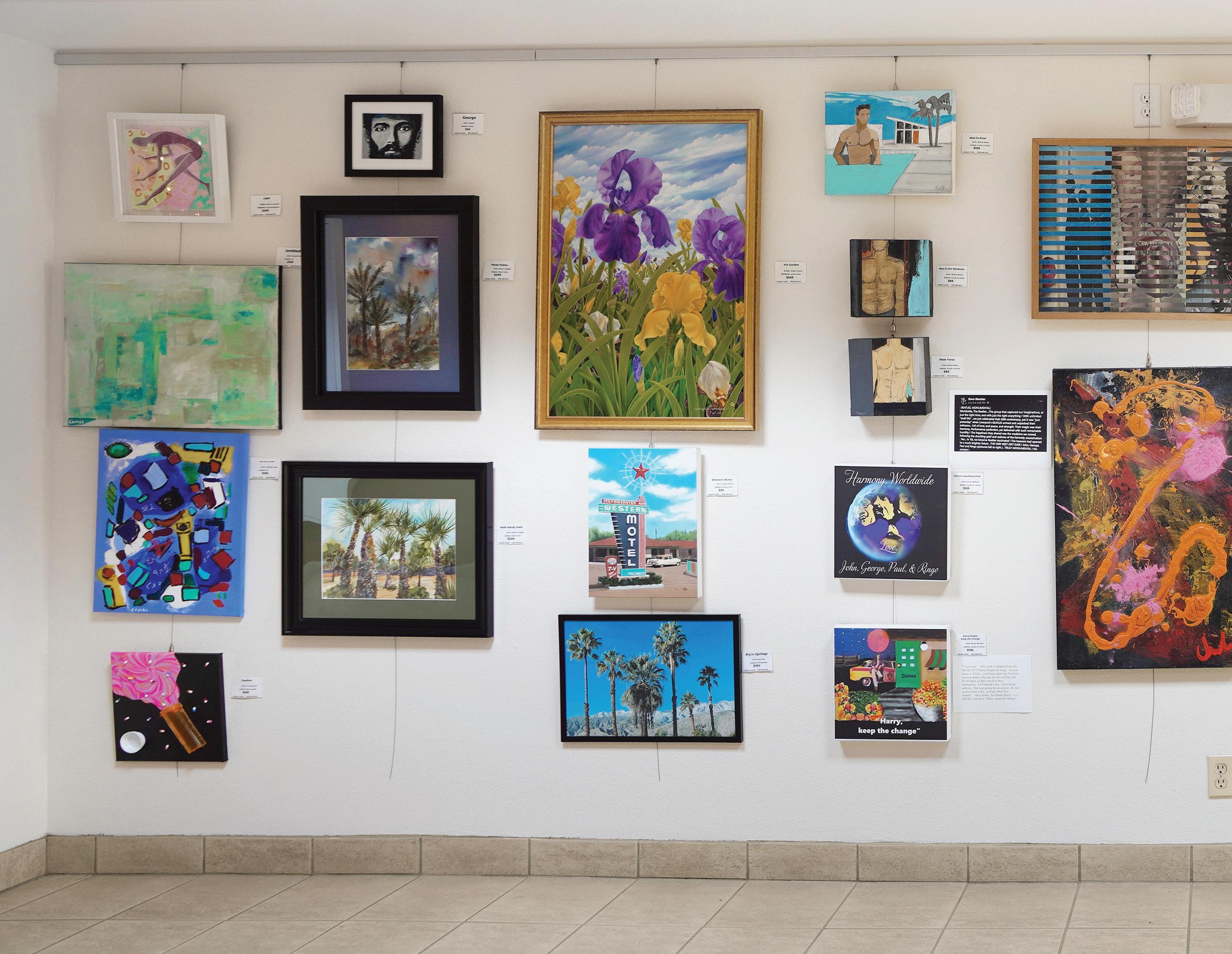
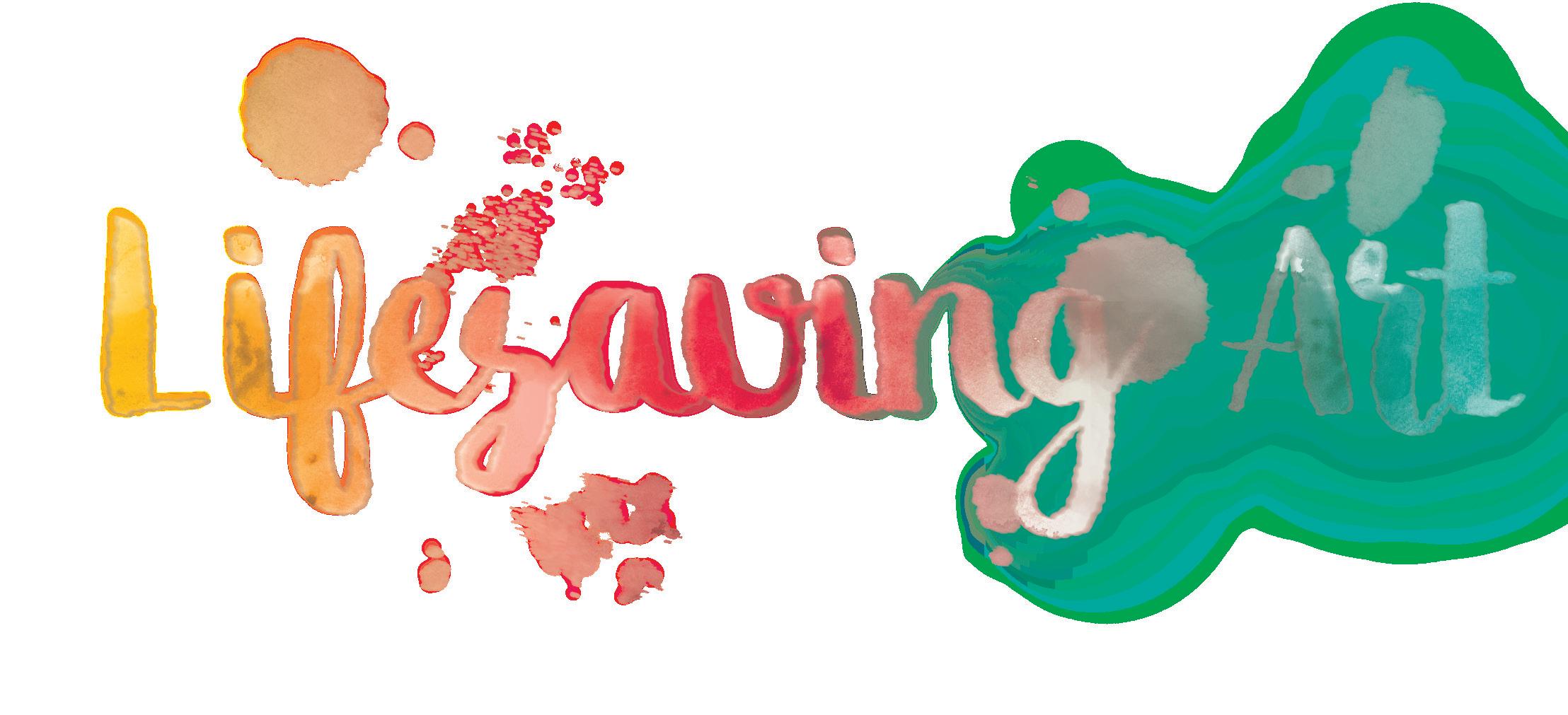
What began as a series of pop-up art shows featuring the work of DAP Health clients continues to honor the talent and tenacity of the artists while building avenues of income that improve their quality of life.
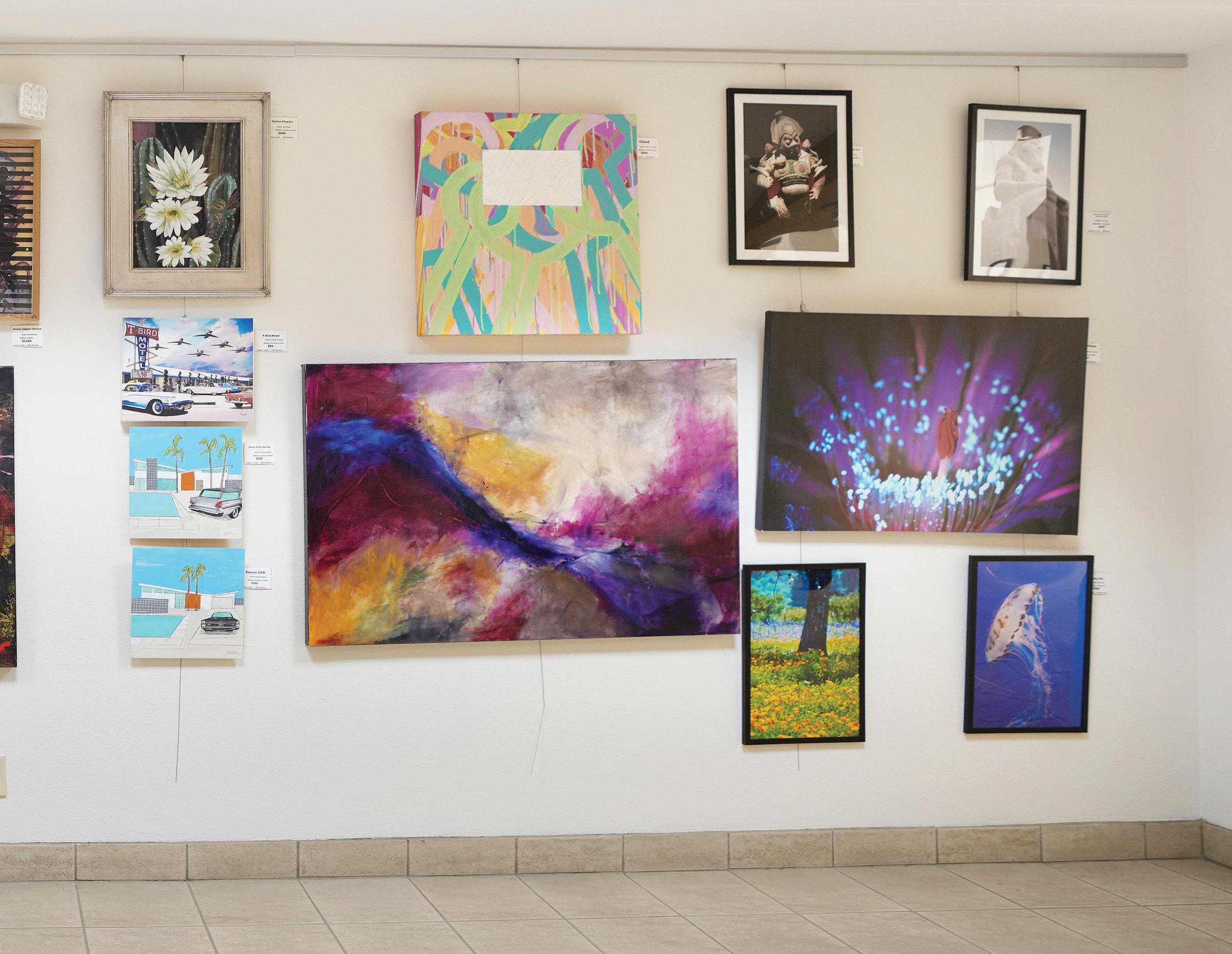
It was during a 2016 career workshop that DAP Health’s then-Associate Director of Personal Development and Wellness Valerio Iovino discovered that several of the clients were artists. This led him to secure local venues to display their work, which resulted in an invitation to participate in the prestigious Indian Wells Arts Festival.
Seven years later, Wellness Center Manager Cory Lujan is excited about the ongoing evolution of the project and what it means to the artists and to the community.
When visitors enter the Barbara Keller LOVE Building on the DAP Health campus, they are greeted by a gallery that displays the art of a dozen Wellness Center patients and clients. Along with sculpture and pottery under glass, there are original oils, watercolors, photographs, and highquality reprints on the wall. Every piece is for sale, with all proceeds going to its creator.
The original intent of sharing the art was to provide additional income. “A lot of long-term survivors lost their jobs and went through their savings,” explains Lujan. “Many of them were able to get disability of some kind, but it’s very little. The goal always was to help clients supplement that and improve their quality of life.”
Wellness Center Administrative Assistant Curtis Howard recalls one of the artists making a $1,500 sale that was enough to pay his rent for the month. “He was so excited! He was in tears,” Howard remembers. “That moment told me that this is really making a difference in their lives, not just having a venue to display their work but actually making sales of their art to the general public.”
The financial benefit is clear to watercolor artist Robert Coughlin, and the results have been lifesaving. “I can think of seven or eight examples where I didn’t think I was going to make it and a painting sold off that wall,” he says. “I was able to buy groceries or pay the light bill.”
Fellow artist George Thomas, who paints vivid collages in oil, selling both originals and prints, agrees. “Having somebody buy a piece of artwork often keeps me going.”
Another way the project continues to evolve is through teaching artists to become more tech savvy. With the aid of a grant from the Houston Family Foundation, Lujan recently hired a temporary computer expert to show artists how to create their own online marketplace.
“Some of our clients have been out of the workforce for a while and may not have the computer skills necessary to succeed online,” she adds. “Even in terms of payment, some of them don’t know how to use Zelle or Venmo, so when a buyer says, ‘I really like this and I want it right now,’ but they don’t have the cash, they could lose a sale.”


Although the financial aspect is key, the benefits extend further. “I can make a piece of artwork, but if I keep it to myself, there’s no satisfaction,” says Thomas. “I want people to look at it and maybe get something out of it.”




“Just reaching out to a client and saying your artwork can come up on this wall has such an impact. Everybody’s welcome to join,” says Coughlin, who began painting when he was just 3. Returning to his love of watercolor offers not just revenue but the joy of artistic expression. “After the doctor told me to get my affairs in order, I thought it was over,” he says. “This is my voice.”
Client artwork can be viewed in the lobby of the Barbara Keller LOVE Building on DAP Health’s main Palm Springs campus, which is open during normal business hours to the general public. People can also contact Curtis Howard at 760.656.8414 or CHoward@DAPHealth.org for questions or to purchase client art. 100% of sales benefit each individual artist.



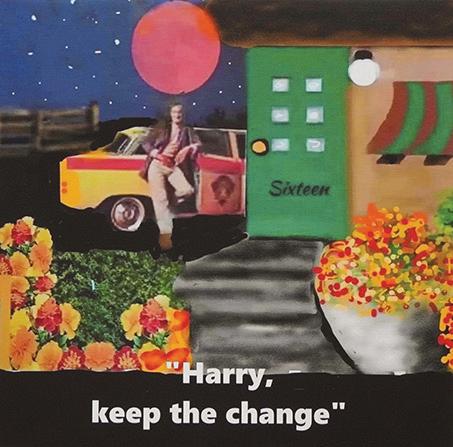
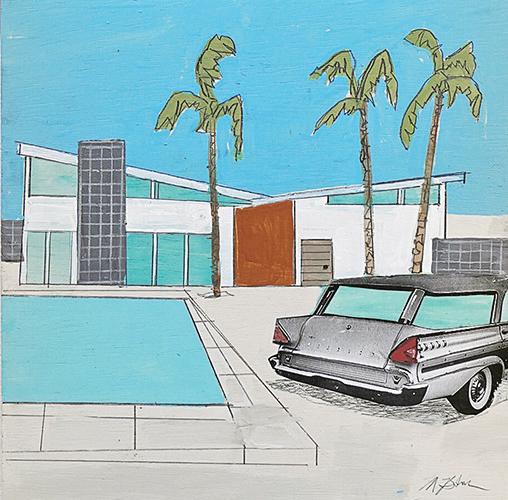

The way one strings together letters of the alphabet matters. All of us at DAP Health take pride in our words, how we use them, and how we pronounce them. Here are just a few reminders.
It’s always DAP Health — never just DAP. And it’s pronounced dee-ay-PEE — never DAP (which rhymes with words like cap, map, and nap).
At DAP Health, we have patients and clients. Patients receive health care only. Clients receive a host of social services as well. Some individuals are both patients and clients, but many are just one or the other. At the moment, we have approximately 8,000 patients and 2,000 clients, and only 20% of them have HIV.
Here, it’s always spelled as two words.
Here, it’s always hyphenated.
mpox
Here, we follow the World Health Organization’s November 2022 designation.
Here, the disease caused by the coronavirus always includes the numeral.
Our main Palm Springs campus boasts both the Barbara Keller LOVE Building and the Annette Bloch CARE Building, the former named after the first woman (and straight person) to serve as board of directors chair, the latter labeled in honor of one of our most magnanimous benefactors. Both of these great ladies have passed, but their incalculable contributions live on. Please note how the words LOVE and CARE are always spelled out in all caps.
In Southern California, many people use the terms “Hispanic” and “Latino/a” interchangeably, which is mostly OK, because for people of Mexican heritage, either applies. But beware: Brazilians who speak Portuguese (not Spanish) are Latino but not Hispanic. And Spaniards (who speak Spanish) are Hispanic but not Latino. Confused? You’re not alone.
Illustrator and writer Terry Blas explained it beautifully when he stated:
Latino is a term that is telling you about geography. Latino means “from Latin America.” Latin America refers mostly to everything below the United States of America, including the Caribbean.
Hispanic is a term that is telling you about language. Hispanic means “from a country whose primary language is Spanish.” But not every country in Latin America speaks Spanish primarily. And still, it’s complicated. So — just like when it comes to sexual orientation and/or gender identity — perhaps the wisest thing to do is to refer to people by the term they prefer.
